

Babcock plays a crucial role in international defence, ensuring critical services and readily available, affordable and long-lasting. Now more than ever, what we do matters.





Babcock plays a crucial role in international defence, ensuring critical services and readily available, affordable and long-lasting. Now more than ever, what we do matters.




Countering airborne threats at sea
World-leading counter-drone technology, made in Australia, exported to the world. Slinger is a lightweight remote weapon system suitable for land and naval applications. With a high probability of kill using fewer rounds, the system has superior accuracy and achieves longer-range engagement up to 2 km.
NO ONE KILLS DRONES LIKE EOS DISCOVER MORE
Kia ora and welcome to the Winter 2024 edition – and 32nd issue – of Line of Defence Magazine!
In this extended 60-page edition, we’re privileged to be joined by Defence Minister Judith Collins and Labour Spokesperson for Defence Peeni Henare, Police Minister Mark Mitchell, and Labour Spokesperson for Police Ginny Andersen
Minister Collins lays out Budget 2024’s Defence projects, writing that amid regional instability the NZDF needs to be able to work closely with international partners, using assets and equipment that operate effectively and communicate securely. Former minister Henare argues that the Budget fails to provide the new investment necessary to address the challenges.
Editor-at-Large Dr Peter Greener is back on deck, writing that with a challenging economic outlook, there has been no indication of a commitment to anything like the amount of money necessary for the replacement of essential defence capabilities. Senior Contributor Dr Wayne Mapp argues that the quantum of investment needed means that the need for substantial new expenditure goes well beyond the current government.
Fellow Senior Contributor Andy Watts suggests that the Australian surface combatant review’s recommendations around Tier 2 general purpose frigates pose interesting questions for New Zealand, including whether to join the Tier 2 program. And Contributor Ross Browne provides some insights from the recent Centre for Strategic Studies’ (CSS) maritime security symposium in Wellington
In International Security, I was delighted to sit down for a chat with Southeast Asia and global affairs extraordinaire Richard Heydarian just a day after he spoke at the CSS event. In this interview, Richard explains why Philippines holds the South China Sea cards over China as a US ally and dangerclose neighbour of Taiwan.
In Homeland Security, Mark Mitchell outlines the government’s law and order agenda, including new legislation, more beat officers, and more new recruits. Ginny Andersen argues that youth crime will be dealt a major blow if government starts to take family violence seriously. We’re also joined again by Senior Contributor Dr John Battersby, who asks some tough but necessary questions around He Whenua Taurikura.
All this, and much more in this issue of Line of Defence, including some excellent contributions from sponsors EOS, Nova Systems, GA-ASI, and Babcock
Lastly, a big congratulations to all the Women in Security Awards Aotearoa 2023-24 winners: LTCOL Laura Cranston, Chief Customs Officer Janna Binning, Detective Beth Bates, Tegan Wedderburn, Gina Lindsay-Crawford, Catherine AbelPattinson, COL Mel Childs, and Inspector Juanita (Whiti) Timutimu. Details inside!
Get in touch if you feel you’ve got something to contribute to the conversation!
Nicholas Dynon, Auckland.
Hon Judith Collins KC MP Hon Mark Mitchell MP
Hon Peeni Henare MP Hon Ginny Andersen MP
Hon Dr Wayne Mapp QSO Dr Peter Greener
Dr John Battersby Dr Richard Heydarian
CAPT Andy Watts RNZN (Ret) Mr Ross Browne
Mr Nicholas Dynon EOS
Nova Systems GA-ASI
Babcock SIPRI
SPONSORS & PARTNERS
EOS
Nova Systems
GA-ASI Babcock
Loktronic RiskNZ
Massey University ASIS International
Centre for Defence and Security Studies

UPCOMING ISSUE
SPRING
September 2024
Main themes: Information domain, information security, cyber, space
Copy Deadline: 20th August 2024
Publication: 1st September 2024
INDUSTRY ASSOCIATION
Chief
Postal and delivery address: 27 West Cresent, Te Puru 3575, Thames RD5, New Zealand
Women in Security Awards Aotearoa www.linkedin.com/company/defsec-media-limited
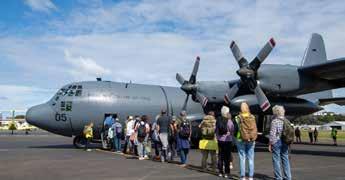
6 Judith Collins: Paying tribute to battles past, looking forward to opportunities ahead
8 EOS Slinger: Redefining defence against aerial and surface threats
10 Donna Tilley’s award-winning journey improving Army engineering
12 Short Takeoff and Landing Capability Delivers Critical Mission Flexibility to UAS Op
15 Peeni Henare: Time to commit to real, substantial investment in capabilities
16 Australian Surface Combatant Review: What bearing could it have on RNZN fleet renewal?
20 What does Budget 2024 portend for Defence Capability Procurement?
22 Quantity, Capability, or Both: More investment in Navy needed
24 HII and Babcock launch new company to accelerate Australia’s nuclear-powered submarine program
25 New secretary appointed for New Zealand’s Ministry of Defence
26 Outgoing Chief of Defence Force recognised in King’s Birthday Honour List
28 Pacific in focus at Maritime Security Symposium in Wellington

30 Women in defence, law enforcement, government, and private security recognised

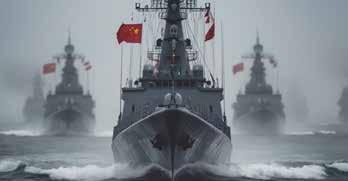
34 Richard Heydarian: ASEAN’s failure and Philippine’s leverage in South China Sea
40 SIPRI Yearbook: Nuclear weapons proliferate as geopolitics deteriorate
44 A Deadly Year: Key findings from the Global Terrorism Index 2024

50 Mark Mitchell: Backing the frontline
52 Andersen: Tackling family violence requires a long term plan
54 What can we learn from the Westfield Bondi Junction Mall incident?
58 Opinion: Understanding counter-terrorism needs serious scholarship
Defsec Media Limited publishes Line of Defence, FireNZ Magazine and New Zealand Security Magazine premier publications covering industry sectors that help keep Kiwis safe. Find us online www.defsec.net.nz
Copyright: No article or part thereof may be reproduced without prior consent of the publisher.
Disclaimer: The information contained in this publication is given in good faith and has been derived from sources believed to be reliable and accurate. However, neither the publishers nor any person involved in the preparation of this publication accept any form of liability whatsoever for its contents including advertisements, editorials, opinions, advice or information or for any consequences from its use.
The NZDF needs to be a credible, combat-capable force that can work closely with international partners using assets and equipment that operate effectively and communicate securely, writes Defence Minister Judith Collins.

Hon Judith Collins KC, AttorneyGeneral, Minister of Defence, Minister for Digitising Government, Minister responsible for the GCSB, Minister responsible for the NZSIS, Minister for Science, Innovation & Technology, Minister for Space, Lead Coordination Minister for the Governments Response to the Royal Commission’s Report into the Terrorist Attack on the Christchurch Mosques.
As Minister of Defence I have recently been humbled to attend several commemoration services in Europe, representing the people of New Zealand.
The first was on Anzac Day in Belgium, where a memorial at Buttes New British Cemetery near Passchendaele pays tribute to 378 New Zealanders who died there during World War I and have no known grave. More than 12,000 members of the New Zealand Division are buried in 430 cemeteries like this across Belgium, France and the United Kingdom. It is astounding.
The second was in May in the Italian town of Cassino, where 343 New Zealanders were killed over four months of bitter, close-quarter fighting during World War II. My own father, Percy Collins, fought there, so I know all too well the scars, both physical and mental, that this campaign left on those lucky enough to survive.
The armed services have played an indelible role in New Zealand’s history and, looking ahead, I am sure the New Zealand Defence Force (NZDF) will continue to do so.
New Zealand is facing the most challenging global environment in decades, something that my
international counterparts also shared with me during my recent travels.
International rules and norms are being challenged by states and actors around the world. We only have to look at events in Ukraine and the Middle East to see how rapidly peace and stability can deteriorate.
As always, NZDF personnel are on the frontline of our national security. I have been deeply impressed with their capability, training and commitment to service. Without hesitation they deploy to domestic or international emergencies to help communities in need, often putting their own safety at risk.
Just last month, NZDF made seven flights to evacuate 225 New Zealanders and 145 foreign nationals from New Caledonia, following an outbreak of violence. Soon after, they were called upon to deliver aid supplies to Papua New Guinea following a landslide that killed hundreds of people.
The Defence Force has been facing a number of challenges in recent years, particularly personnel attrition and ageing equipment.
That is why the Government committed $571 million towards NZDF pay and projects in Budget 2024.
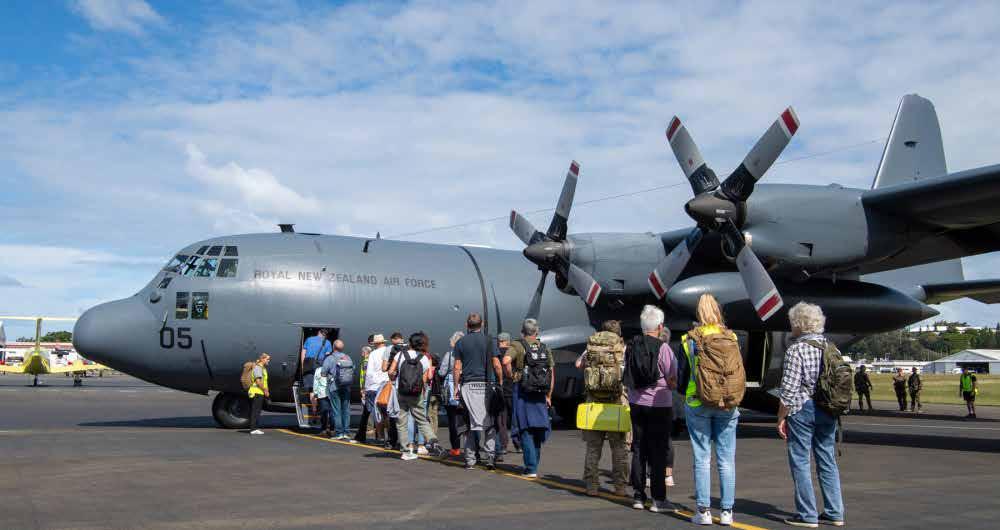
$163 million has been allocated to boost NZDF salary packages to ensure we retain their excellent services and expertise.
$408 million has been set aside for seven defence projects, subject to Cabinet’s approval of individual business cases. It is critical NZDF personnel operate modern, safe and fit-for-purpose equipment.
Budget 2024 projects include:
• Beginning the replacement of the NZDF’s most frequently deployed vehicles, the Unimog and Pinzgauer fleets. Replacement vehicles will have integrated communications that enhance interoperability with Defence partners;
• the next phase of an upgrade to the NH90 helicopter navigation systems and radios;
• upgrading the regional supply facility and logistics model at Linton Military Camp;
• modernising devices and productivity tools;
• upgrading some digital services;
• improving national maritime domain awareness; and
• the construction of 35 new homes for the families of Defence
personnel based at Devonport Naval Base.
But Budget 2024 is not the last you will hear from me on investment in our Defence Force. Options for an updated Defence Capability Plan are underway. The plan, once approved, will help shape investment decisions for Defence until 2040.
up partners, old and new
New Zealand’s security and prosperity are inextricably linked to broader regional and global security and prosperity - 80 percent of our annual exports go to the IndoPacific.
In an increasingly unstable world, NZDF needs to be a credible, combat-capable military force that can work closely with international partners, using assets and equipment that operate effectively and communicate securely.
I have taken every opportunity to meet with our defence partners, to understand their perspectives, and to demonstrate that New Zealand is internationally engaged and willing to step up to respond to new and emerging threats. International
cooperation and collaboration is critical.
Just recently I attended the Shangri-la Dialogue in Singapore to discuss security issues with many of my counterparts from around the world. Our Defence partners reiterated the importance of measures which help to build trust and confidence between regional partners and enhance military interoperability.
That is why New Zealand supports a broad range of international partnerships, such as the Five Power Defence Arrangements, which have security benefits and aligns with New Zealand’s own interests and values.
Interests and values, I note, that have barely changed since last century’s two World Wars. Whilst visiting those cemeteries in Belgium and Italy, I could not help but reflect on the liberal democratic principles those soldiers from countries around the world fought for. They are still fundamental to New Zealand society today, and to the societies of our international partners.
As it was then, no one country can respond to the challenges of our time alone.
With its unmatched precision, Electro Optic Systems’ (EOS) Slinger counter-drone system is setting new standards for hard-kill on-the-move.
As defence strategies evolve to address the threat of increasingly sophisticated uncrewed aerial systems (UAS), technologies like EOS’ Slinger counter-drone system become essential. Leading advancements in precision and adaptability, Slinger directly tackles both aerial and surface threats.
The system leverages EOS’ longstanding expertise in technology and precision, featuring a fully stabilised three-axis gimbal and a four-axis sensor unit for exquisite accuracy on-the-move. Its modular design facilitates easy integration with existing platforms, rapid battle damage repair, and accommodates various weapon types, including machine guns, cannons, rockets, and missiles.
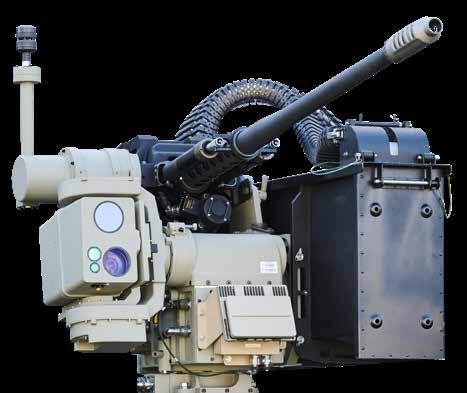
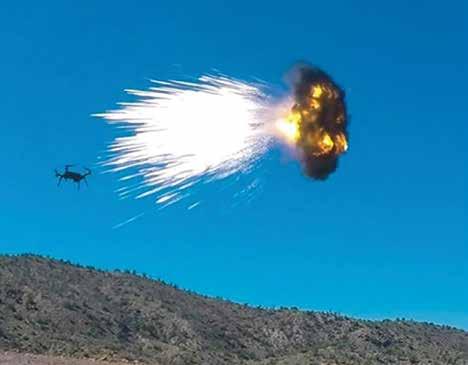
Slinger’s innovative approach to counter-drone technology, combining advanced software, precise targeting, and versatile weapon options, sets it apart as a leading solution in the field. Its ability to provide effective and efficient drone defeat capabilities makes it a valuable asset for military and security forces worldwide.
Slinger’s effectiveness is further enhanced by its ability to operate in day, night, and nearly all-weather conditions, providing continuous protection against drone threats. Its robust design ensures reliable performance in harsh environments, making it suitable for deployment in diverse operational settings.
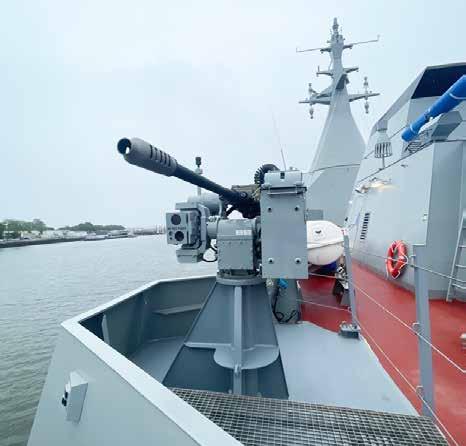
Designed for versatility, Slinger operates effectively in diverse environments and integrates seamlessly with existing military infrastructures, enhancing the operational capabilities of both army and naval forces. The system also effectively integrates into wider Command and Control networks
to either receive target information from external detectors or supply target information from its sensors.
Beyond Slinger, EOS has achieved significant success with other counter-drone technologies. A notable collaboration has been with

L3Harris on the R150 remote weapon system (RWS) gimbal, currently used in Ukraine on the L3Harris VAMPIRE systems, providing precise targeting capabilities and enhancing the effectiveness of counter-drone operations.
The EOS R400 RWS has also been extensively deployed on various platforms, from light uncrewed ground vehicles to M1A1 Main Battle Tanks. It is also widely used on Australian Bushmaster vehicles and is soon to be installed on Australian Hawkei vehicles. Additionally, EOS has supplied its RWS for static installations in containers and permanent facilities.
In the maritime domain, EOS’ RWS have been installed on platforms ranging from highspeed patrol boats to Corvette class vessels. Plans are underway to equip the Australian Army’s Littoral Manoeuvre Vessels, further extending their role in naval operations.
EOS remains committed to continuously enhancing its Slinger system and other counter-drone technologies, integrating advanced sensor technologies and expanding weapon compatibility to meet a broader range of threats.
“We are constantly refining our systems to stay at the forefront of counter-drone technology,” said Andreas Schwer, CEO of EOS. “As threats from both land and sea grow more sophisticated, the need for advanced countermeasures like those developed by EOS increases”.
“Our dedication to innovation and developing responsive solutions for contemporary military operations makes our counter-drone systems invaluable assets in global defence strategies.”
EOS’ counter-drone achievements not only redefine standards for VSHORAD but also set new benchmarks for security and operational efficiency in military engagements worldwide, on land and at sea.
With an impressive 20-year global defence sector career, Nova Systems Project Manager, Donna Tilley, is now entrenched in a complex project to significantly overhaul land engineering systems within the New Zealand Army.
Donna has been leading the Land Engineering Optimisation (LEO) project, working for the Directorate of Land Engineering (DLE) within the New Zealand Defence Force, for the past 18 months. The LEO Project is being delivered through three Lines of Effort with a focus on People, Systems and Professional Development.
In May, Donna’s work on the project was recognized when she was awarded the Kotahitanga (Unity) Award, as part of the NZ Minister’s Awards for Excellence in Industry. The Unity Award recognises individuals who exemplify unity and collaboration within the New Zealand Defence Force.
Donna said she was proud to receive the award, which represented a culmination of efforts across the project team.
“I am deeply honoured to receive this award from the New Zealand Defence Industry Advisory Council,” Donna said.
“It not only represents my efforts over the past 18 months, but also the unwavering support I’ve received from the LEO Nova NZ team and LTCOL Denis Petre and his team within the Directorate of Land Engineering.
“This award celebrates the principles of teamwork, commitment, and shared objectives, which have consistently aligned with
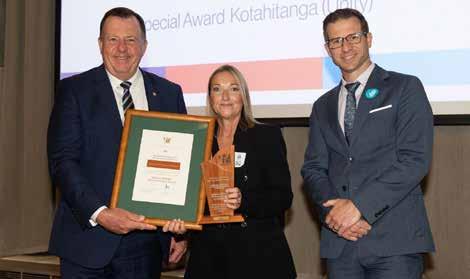
my fundamental beliefs throughout my professional career.
“These core principles have been instrumental in forming an effective LEO Project team. Moreover, unity has also been crucial in fostering a sense of togetherness and cohesion, orchestrating individual activities in harmony to achieve the teams’ objectives.”
The Land Engineering Optimisation (LEO) Project will implement essential engineering systems to ensure the safety and effectiveness of land materiel through the three Lines of Effort (LOE).
LOE 1 is the development and implementation of a new organisational structure and
operating model that will ensure that the value proposition is delivered through value streams, which are aligned to the Directorate of Land Engineering and Land Domain vision and objectives.
LOE 2 focuses on improved engineering outcomes that will enable Land Domain to assure the Landworthiness Authority that capability is safe and effective, through the development, integration and optimisation of Design Control and Configuration Management processes within DLE and adopted across Land Domain.
And LOE 3 is the establishment of clearly defined professional development pathways which may

contribute to Army having a pipeline of suitably qualified and experienced personnel (SQEP) engineers not only within DLE but across the Land Domain, Army and NZDF.
Donna’s professional background spans various roles within Defence sectors, including time spent at the UK Ministry of Defence (Defence Evaluation and Research Agency), with the UK Defence contractor QinetiQ, and the Department of Defence in Australia.
She attended the Australian Defence Force Academy, gaining a Master’s degree in business from the University of New South Wales, and was employed in both the Defence Materiel Organisation and Capability Acquisition and Sustainment Group.
“In Australia, I was the Deputy Director of Acquisition and Sustainment Agreements, as well as Business Manager; both positions within Army Aviation,” she explains.
“These roles provided me with a broad spectrum of experiences across different business functions in these industries.
“In addition to my Defence sector roles, I also have experience in non-Defence sectors. Specifically, I’ve held business and project
management positions within higher education institutions and the private sector.
“My expertise lies in project management, business management, stakeholder engagement, operational and strategic planning, and functional governance,” she explains. It was a chance opportunity for her husband Graeme, who also works for Nova Systems as a Senior Systems Engineer, that led to relocating to Wellington from Brisbane, Australia. Donna subsequently secured a position with Nova on the LEO project.
Her approach to the LEO project began with gaining a comprehensive understanding of the objectives and leading with a collaborative mindset.
“In partnership with the Nova Systems team and the Directorate of Land Engineering (DLE), we established a set of clear goals and a corresponding timeline. These collaborative workshops led to the approval of a Benefits Realisation Plan,” Donna explains.
“This plan equipped the Senior Responsible Officer with the means to clearly communicate the project’s outcomes and Key Performance Indicators, providing measurable
data to demonstrate the realisation of benefits related to the delivery of the LEO Project.
“Adopting this leadership style, I believe, played a crucial role in ensuring that all team members were united in pursuing common goals. It also facilitated the delegation of both technical and non-technical tasks to the respective experts, paving the way for educated decision-making throughout the project, therefore contributing to the successful completion of the project outcomes to date.”
As part of the Unity Award acknowledgement, LTCOL Denis Petre, Logistics Command, Director of Land Engineering said: “We certainly wouldn’t be where we are in the project if it wasn’t for Donna’s management of it.”
“I am deeply passionate about the work I do and the commitment I bring to each project,” Donna added. “Ensuring the delivery of high-quality results to Nova Systems clients is not just a professional obligation, but it’s a personal endeavour that I truly embrace.”
Donna Tilley receives the 2023 Minister of Defence Kotahitanga Unity Award (youtube.com)
Uncrewed aircraft have been changing the world for decades now – but they’ve never stopped evolving.

A new wave of aircraft and capabilities is poised to usher in another era of expanded roles and missions. One of the most exciting is short takeoff and landing, also known as STOL. These STOL platforms enable highly expeditionary operations which have become more relevant to many defence forces, including to the New Zealand Defence Force.
Industry leader General Atomics Aeronautical Systems, Inc. (GA-ASI), based in San Diego, is developing
new models of STOL uncrewed aircraft that offer tremendous endurance, sensing, versatility and other benefits of today’s leading medium-altitude, long-endurance uncrewed aircraft, with much greater flexibility about how and where to employ them.
Leading the way has been the company-designed, company-built demonstrator called Mojave. This aircraft is a demonstrator variant of GA-ASI’s Gray Eagle uncrewed aircraft with different wings, tails
and engine, and tougher landing gear. By trading off a small amount of the maximum endurance of the older model, Mojave has shown it can take all the traditional capabilities almost anywhere.
Mojave has taken off and landed from very short runways; from unimproved surfaces in the desert; from a warship at sea. In the spring, it destroyed a number of static targets in a live-fire test at a test range in Southwestern United States. These achievements have generated a

great deal of international interest in the forthcoming production model –Gray Eagle STOL (GE STOL).
The STOL advantage
The STOL approach solves a problem that has been identified the world over: how to build an uncrewed aircraft that provides the best intelligence, surveillance, reconnaissance, and other roles such as contested logistics, but which also does not depend on a large, fixed, traditional air base.
Large bases tie operations to one area. They’re easy to surveil and necessitate predictable patterns of operation and life. They provide easy, unmoving targets to adversaries, which can be difficult to defend. That’s why military services are interested in systems that let them gain more independence and flexibility.
Many prospective solutions have been offered – most of them unsuccessful. Catapult-flung, tubefired, rocket-blasted, vertical take-off
(VTOL), or other novelty launching systems don’t need runways, but also cannot do what is necessary: the aircraft that use them are too small to carry enough fuel to fly for very long and don’t have a useful payload.
What GE STOL offers is an aircraft with very short ground roll that doesn’t need a paved runway, but which also boasts around 25 hours’ endurance, depending on its payload, and provides class-leading full-motion video, synthetic aperture radar and other sensing. Multiple networking capabilities mean the aircraft could be operated from its forward location or it could be flown by satellite from a ground control station that can be located anywhere in the world.
There are a huge number of applications: GE STOL might take off from a home station air base and fly to a distant forward location where a small number of troops had already set up an austere expeditionary base. With a plot of grass, a straight section of beach,
or a neighborhood football pitch, the detachment could have its own landing strip.
The aircraft might provide armed overwatch, mission escort, reconnaissance, or serve other tactical whole-of-government roles. GE STOL also is on the forefront of a new mission set gaining increased attention from the U.S. Army and its international partners: a concept called contested logistics.
In a conventional land conflict, two competing forces might face each other along a forward line of troops, or across a geographical boundary such as a river or mountain range and control all the territory back from it on each side. Tomorrow’s conflicts, however, might not be so simple – friendly forces might need to occupy islands, including perhaps man-made ones, within larger sections of contested territory or waterspace. In that event, the basic job of keeping them fed, armed, and equipped gets much more complicated.

The GE STOL “truck”, with its ability to carry a 1,000-pound payload over tactically significant ranges, can be part of the solution: the aircraft might take two cargo pods through contested territory to friendly forces, land briefly to drop them off, and then quickly take off again. The aircraft could remain overhead to patrol for hostile forces, take another mission or return to base. An additional “truck” role for the GE STOL is for the aircraft to carry smaller UAS, which in turn can carry smaller UAS such as a loitering munitions into contested and/or denied airspace. This concept of operation extends the range of a “swarm” of loitering munitions well beyond their operational range.
GA-ASI is also developing a forthcoming STOL version of its MQ-9B SkyGuardian and SeaGuardian aircraft. This aircraft will provide an even greater payload, endurance, sensing, and other capabilities over the smaller GE STOL model.
One main area of focus for MQ-9B STOL is naval operations. The aircraft’s day-long endurance will enable navies to rewrite their
practices across the range of naval missions, which might include intelligence, surveillance, and reconnaissance; electronic warfare; anti-submarine warfare; and airborne early warning.
MQ-9B’s proven effectiveness at hunting undersea targets, for example, would give surface forces a huge new advantage in anti-submarine warfare. The aircraft is the only one of its kind that can release and monitor sonobuoys, holding custody of submerged targets for much longer than any human-occupied helicopter or maritime patrol aircraft due to an extended endurance.
MQ-9B also has had many successes as a communications relay for naval surface action groups. Operating high over a group of warships, the aircraft can provide high bandwidth as needed for ships and other units to share information, coordinate and conduct operations.
The aircraft also might provide escort for a surface action group before it heads into a choke point or other potentially hostile waterspace. Or it could take still other novel missions – or simply serve as a multidomain intelligence, surveillance, and reconnaissance platform for allied operations.
These aircraft can transmit highquality, full-motion color video or infrared footage any time of the day or night. With their synthetic aperture radar, they can see through clouds, smoke, haze, mist, or any other atmospheric obstruction. And a huge number of diverse payloads mean they can take on nearly any role required for an aircraft in the technically complex operating environments of the 21st century including doing the “truck” concept of operations/mission of providing a lift to the smaller “swarming” aircraft systems like the GE STOL.
Much of this already has been true for conventional mediumaltitude, long-endurance remotely piloted aircraft – which aren’t going anywhere, and which also will continue to evolve their abilities with new technologies and new types of application. The good news for today’s defence and security forces is that STOL means these aircraft can operate from more diverse and unprepared locations than ever before.
In the New Zealand context, this could translate to rapid, dynamic operations throughout the broad area of national interest where terrain can be challenging and services-limited.
Much of what is heralded as ‘new’ for Defence in Budget 2024 is actually old news, and it fails to provide new investment necessary to address pressing challenges, writes Hon Peeni Henare.
Naturally at this time of year, all eyes are on the Government and their budget announcement. As the Labour Party Spokesperson for Defence, it is my duty to scrutinise the government’s decisions, namely those that will have an impact on our Defence force.
The recently announced 2024 Defence budget exposes glaring deficiencies going forward.
Overall, the decrease in funding is of huge concern. We know that Defence bases its work programme on long-term vision, long-term planning, and long-term security of funding. Unfortunately, Budget 2024 provides none of these, and doesn’t seem to make any effort to address any of the mounting concerns for our Defence Force.
Defence is in desperate need of new investment. Much of what is heralded as ‘new’ in this budget is, in fact, old news. The Government has re-announced several projects and investments initiated under the last Government.
Both the upgrade of the NH-90 helicopters, and the replacement of the aging Pinzgauer trucks were announced by the last Government, only to be re-baked for the Minister’s recent pre-budget announcement. While the continuation of both these projects is a welcome effort, there are calls for further investment looking forward.
We are also pleased to see further investment in this year’s budget for improved remuneration, something that the Labour Government heavily invested in through the previous two budgets.
The Government however, is no longer investing into our Defence Estate, infrastructure that our Defence Force relies upon, and serves as an incentive for recruitment and retention which is why urgent investment is necessary.
Our current capabilities are aging fast in a sector that is forever evolving, and without substantial new funding we risk falling even further behind the global standard for a modern military. One of the most pressing issues is our aging Boeing 757s.
The Defence Force relies heavily on the 757s for transport, both domestically and internationally. These planes have valiantly served us for more than 20 years, however in recent years they have become notorious for their frequent breakdowns, causing significant disruptions and highlighting the urgent need for modern replacements.
As the funding for the four new P-8A Poseidons, and the five new C-130J aircraft wind up, there would be no better time than now for the Government to look to invest in a replacement for the 757s.

Budget 2024 is a missed opportunity for the Government to give an indication to our Defence Force that their future is in good hands. It fails to provide the new investment necessary to address the pressing challenges faced by our Defence Force.
Repackaging old announcements does not equate to progress. We need a bold, forward-looking strategy that equips our military with the tools they need to protect our nation both domestically, and internationally in a geopolitically turbulent time for our part of the world.
It is time for the Government to commit to real, substantial investment in our defence capabilities.
The Australian surface combatant review’s recommendations around Tier 2 general purpose frigates pose interesting questions for New Zealand, writes maritime capability specialist and former Royal New Zealand Navy Officer Andrew Watts.

Senior Contributor CAPT Andy Watts
RNZN (Ret) is Maritime Defence Capability Consultant, AUSTAL. He was previously Deputy Executive Director, Australian Civil Military Centre, and an RNZN officer for over 30 years.
In a way this article isn’t particularly timely given that Cabinet is currently considering a new Defence Capability Plan that will hopefully address options for the renewal of New Zealand’s naval capability when the current fleet reaches the end of its life of type in the early to mid-2030s.
Having said this, the recently completed Australian Surface Combatant Review has no doubt had a bearing on the options presented to government, and it’s possible to reflect on the implications of Australian intentions without prejudging the DCP process.
The public version of Enhanced Lethality – An Independent Analysis of Australia’s Surface Combatant Capability (the Review) was released on 20 February this year. The Review is an outgrowth of the Australian Defence Strategic Review released in 2023, the latter having determined that the issues around surface combatant capability requirements were so broad as to require further detailed study that could not be completed in time for DSR submission and release.
The overriding theme of the Review is that the current surface combatant fleet is not fit for purpose given Australia’s strategic circumstances, specifically the emergence of regional strategic
competition. In the assessment of the Independent Analysis Team that conducted the review, the fleet is too small and insufficiently capable to address potential threats, and that significant re-orientation is required.
The Australian government has accepted almost all of the review recommendations. The Hunter class frigate program will terminate at six units instead of the nine currently planned, the Hobart class air defence destroyers will be significantly upgraded, and six optionally crewed surface platforms will be acquired to provide magazine depth for the Hunter and Hobart classes in the form of additional vertical launching silos for advanced air defence and strike missiles.
Tier 2 general purpose frigates
The review recommendation of most interest to Aotearoa New Zealand, however, is that at least seven and optimally eleven “Tier 2” general purpose frigates optimised for undersea warfare will be acquired to secure maritime trade routes, defend Australia’s northern approaches, and escort military assets.
Tier 1/2/3 capability descriptors were introduced by the Australian Chief of Naval Staff in 1986, but have seldom been used since. However, they are useful

differentiators in the programmatic sense, particularly for people who –with some justification – find naval nomenclature somewhat confusing.
Tier 1 equates to highly capable multi-function combatants such as the US Arleigh Burke class and the Australian Hunter and Hobart classes. These ships are capable of sustained, high intensity combat operations.
Tier 2 ships are less capable and more affordable combatants generally intended for lower intensity operations. However, the emphasis in the review on undersea capabilities suggests that in this dimension, the capabilities of the projected Tier 2 combatant could approach Tier 1 levels. The post Frigate Systems Upgrade Project Anzac class frigates fall into the Tier 2 category, although they are not optimised for undersea warfare.
Tier 3 ships are those acquired for purely constabulary functions, including resource and border protection. They are not capable of operations of greater intensity than that required for law enforcement. The RNZN Offshore and Inshore Patrol Vessels are in this category.
In arriving at the Tier 2 requirement, the Independent Analysis Team commissioned extensive modelling and simulation
events to determine the best mix of overall surface combatant capability, taking into account the capabilities of the nuclear powered submarine force that will enter service from the early 2030s and other Australian and allied defence capabilities.
Simulation events would have used a variety of scenarios drawn from strategic analysis. The nature of the events and the simulation outcomes will be highly classified. Nonetheless, we can assume that the modelling and simulation capabilities used were advanced given the investment that Australian Defence has made in this area over many years. We can also assume that the event scenarios were focused on the region in which we share strategic interests with Australia.
In sum, we can be confident that the outcome of this analysis in terms of the number and type of Tier 2 capabilities required by Australia is both valid and relevant to our own requirements.
In determining solutions to the Tier 2 requirement, speed to capability appears to be the overriding consideration. To this end, Australia’s Head of Naval Capability, Rear Admiral Hughes, has announced that the Tier 2 design selected will not be altered from its original configuration in any way.
This is a significant decision, greatly reducing the integration and design risks that have emerged in other projects where base designs have been altered to incorporate Australian capability choices. On the debit side, the Tier 2 ships will introduce many new supply chains and training system requirements.
The advantages that might accrue to Aotearoa New Zealand from joining the Australian Tier 2 program are threefold. Firstly, we would be acquiring surface combatants fully compatible with, and credible to, our only formal ally. We could be assured that the design selected is a good fit with regional requirements on the basis of the modelling and simulation commissioned by the Independent Analysis Team.
Secondly, it will be a large program offering attractive economies of scale – unit procurement prices will be reduced still further should New Zealand join the program.
Thirdly, capability sustainment systems including logistical and engineering support and training could be shared with Australia, dramatically reducing through life sustainment cost and risk for New Zealand.
It is theoretically possible that a similar program of cooperation with a navy other than Australia would yield similar benefits. However, given the closeness of the Australia – New Zealand defence and economic relationship and the depth of the relationship between the two navies on every level, the benefits delivered by cooperation with another navy would need to be spectacular in order to stack up.
In any event, a number of factors on the other side of the balance sheet need to be considered. The first and most significant concerns our ability to recruit and retain a naval combat work force.
Operational research conducted by Victoria University Wellington (and subsequently validated by the Defence Technology Agency) demonstrated that given typical workforce attrition and the training throughput governed by the number of bunks available for trainees in an Anzac frigate, a viable naval combat work force required a minimum of three ships, and even then, deterioration was likely over time. A greater number of training bunks in the Tier 2 frigate would alleviate this problem, as would a reduced attrition rate.
However, work force issues aside, a naval combat force of only two ships (as at present) cannot provide for the full-time availability of a single ship for operational contingencies. In my view this is inconsistent with our defence policy statements, and a minimum force of three combat ships is required to ensure the full-time availability of one ship at an acceptable level of readiness for contingencies.
Secondly, the mission systems of the exemplar Tier 2 designs detailed in the review are tightly coupled to platforms in the traditional warship design sense. This means that at some point they are likely to

require an expensive and technically risky midlife upgrade that will take them out of service for lengthy periods, especially if there is a need to incorporate disruptive new technologies.
In addition, our appetite for such upgrades could well be markedly different from the Australians, who may at some point seek to incorporate Australian sourced systems such as the CEAFAR radar and Saab combat management system. In a recent interview at the Combined Naval Event in Farnborough, UK, Rear Admiral Hughes hinted that this might occur. If we do not or cannot follow suit, our ships will again be orphans, which creates a raft of sustainment challenges.
Thirdly, and allied closely to the second point above, these ships will not be modular to any meaningful degree. They will be effective across the entire spectrum of conflict from resource and border protection through to combat, but they will only be efficient over the combat arc of the spectrum.
Employing these ships on low intensity patrol operations will
consume service life and reduce readiness for deterrent and combat operations. It may be possible to retask them for critical missions, such as humanitarian assistance/disaster relief, mine countermeasures, and environmental assessment, but they will not have the capacity and flexibility across these missions that a modular design would have.
Finally, a modular design would allow capability upgrades without taking ships out of service for halflife refits, as obsolescence is managed within the capability modules by upgrading systems or by replacing the modules wholly. The ships themselves would remain available for operations excepting those that require the individual module undergoing upgrade or replacement.
A patrol/combatant design based on modular concepts would provide greater through life mission flexibility and technological adaptability than the proposed Tier 2 combatant.
It could also enable new workforce concepts whereby some people are coupled to a mission

module as opposed to a ship, which could reduce personnel operating tempos and allow greater focus on career specialisation and accomplishment – the module and its people would only be embarked in ships when required for operations and training.
If people intensive capabilities such as boarding operations are modularised, onboard automation might provide opportunities for reducing the numbers required to operate the platforms and allow multi-crewing concepts to be adopted.
However, in assessing the viability of a force structure based on modularity, there is a very large elephant in the room, which is that despite the wide recognition of the merits of modularity (the Royal Navy’s Maritime Modularity Concept signals it as the way ahead for force design), no-one else has adopted it as a cornerstone fleet design concept.
There is an understandable aversion within New Zealand Defence to being the first to adopt breakthrough technological concepts. As the ‘technological
approach’ future force design principle states, “The Defence Force will seek opportunities to adopt technologies earlier in their lifecycle once proven, and in line with what our partners are doing. Defence will not seek to be at the leading edge.”
However, like all such principles, this should be considered a guide as opposed to an inflexible rule. The advantages that could accrue to a small, resource strapped navy with a broad range of missions are such that modularity must be fully investigated and compared with alternative options, such as acquiring Tier 2 general purpose frigates in conjunction with Australia. The relative risks, benefits, and opportunities must be studied and quantified.
To go somewhat further, the Offshore Patrol Vessels need to be replaced in a similar time frame to the Anzac frigates. It might be possible to replace them with a modular platform and a range of modules for humanitarian assistance/disaster relief, mine countermeasures, and resource and border protection missions.
This would provide evidence of the workability or otherwise of modularity before resources are committed to more expensive combat mission modules, and could be achieved within a similar cost bracket as like for like replacement of the current ships with dedicated OPV. The worst possible outcome is that the navy would be equipped with two highly flexible ships to replace the current OPV.
The potential outcome is that Navy will have a tested modular platform and organisational concept that could be expanded to encompass the combat missions currently performed by frigates. Platforms would thus be standardised, greatly simplifying logistics and training systems, and the benefits of modularity would realisable across the entire fleet.
The Tier 2 general purpose frigates that Australia is acquiring will be highly capable ships well suited to New Zealand’s geostrategic circumstances. A joint acquisition would enhance interoperability with Australia and allow both countries to share logistical, engineering development, and training systems, to the particular benefit of New Zealand.
However, the potential benefits of a fleet based on modular mission capable platforms are such that they must be examined and compared to the Tier 2 approach (or any other involving non-modular platforms), noting that a viable Tier 2 force will require a minimum of three platforms.
When force projection and sealift capability requirements are added to the need to consider combat and patrol requirements, the scale of the task facing NZ Defence can be seen. I’m confident that the people concerned will be guided by objective evidence framed by the future force design principles, and not by inviolable Golden Rules.
With a challenging economic outlook, there has been no indication of a commitment to anything like the amount of money necessary for the replacement of essential defence capabilities, writes Editor-at-large Dr Peter Greener.

Dr Peter Greener is a Senior Fellow at the Centre for Strategic Studies, Victoria University of Wellington, and an Honorary Professor at the Command and Staff College of the New Zealand Defence Force.
On 30 May this year the Finance Minister, the Honourable Nicola Willis, presented her budget speech to Parliament . In it she said, “I want to acknowledge how challenging economic conditions are for many Kiwis right now. New Zealand is experiencing a very difficult downturn.”
Such was the case almost half a century earlier. By the mid-1970s New Zealand’s economy was in a perilous state. In 1973 the New Zealand economy faltered as export prices fell and the price of oil went sky high . That same year Britain entered the European Economic Community and New Zealand’s exports to Britain continued to fall. In 1978 a second oil shock took place amid a still faltering economy. That year the National Government, led by Robert Muldoon, launched a new Defence White Paper. The Review noted:
“In this review defence policies are outlined which are tailored to New Zealand’s own special needs… Full account is taken of the limitations on this country’s resources and the problems it is at present facing. The aim is to make the best use of resources that are already available, and keep new expenditure to a minimum. The approach is realistic; the policy is practicable.” It went on to add, “New Zealand is not a rich country.”
Those sentiments could be reflected with regard to capability development today. The Budget itself painted a bleak fiscal near future for New Zealand over the next three to four years.
Whilst announcing a $14.72 billion tax relief package over four years, the Government forecast that there would be no surplus until 2027/28 , a year later than originally envisaged, and then only a marginal $1.4 billion. New Government operating expenditure over the next three budgets was set to be $2.4 billion
In speaking last month with Tim Fish from the Australian Defence Magazine , I highlighted that successive governments had remained wedded to the NZ$20 billion capital investment for defence equipment procurement originally announced by Gerry Brownlee in the Defence Capability Plan (DCP) 2016 . In that Plan it was emphasised that:
“Maintaining the confidence of Ministers, Central Agencies, industry and the public will be critical over the next 15 years as Defence progresses through a programme of $20 billion of capital investment.”
Prior to last year’s election, National made clear i n their defence policy that they supported the then current defence

Notwithstanding the pre-Budget announcement of a $571 million increase in the defence budget over the next four years (of which about $100 million is to come from savings within Defence), there has been no indication yet of a commitment to anything like the amount of money that is going to be necessary for the replacement of essential defence capabilities.
The replacement of a number of major platforms will be central to the new defence capability plan which the current minister, Judith Collins, is expecting to receive next month . This plan will signal where further investment is needed, not least in the area of maritime capability.
Critical to the future utility of the Royal New Zealand Navy will be the replacement of the two frigates, the most expensive capability of the Defence Force. Planning for their replacement was first highlighted some eight years ago.
The Defence Capability Plan 2016 acknowledged that amongst a number of renewed capabilities, the force structure in 2030 would include a Future Surface Combatant capability, either in service or under procurement, to replace the upgraded
ANZAC frigates will be extended until after 2030… Delaying the replacement of the frigates improves the affordability of the Defence Capability Plan 2019”.
By May 2022, in discussing the Frigate Systems Upgrade, the Ministry of Defence noted that the replacement or upgrading of aging or obsolete systems, was intended to extend the Anzac-class frigates’ operational life out to 2035
HMNZS Te Kaha was delivered to the Ministry of Defence and commissioned into the Royal New Zealand Navy on 22 July 1997. The ship was the second of the ANZACS to be built, and the first steel for the vessel was cut on 11 February 1993 , already over thirty years ago.
HMAS Anzac, ship 01 of the ANZAC class, was launched in Victoria on 16 September 1994 and commissioned into the RAN on 18 May 1996. She was decommissioned on 18 May this year after 28 years of service in the Royal Australian Navy. HMAS Arunta, the next ship built following the completion of Te Kaha, is scheduled to be decommissioned in 2026. New Zealand’s two vessels are now expected to continue in service for more than another decade.
Former Minister of Defence Wayne Mapp, writing in the last issue of Line of Defence , observed that it has typically been the practice of subsequent governments to push out the replacement of major capabilities well beyond their use-by date. The consequence of this, as both the current and the previous Prime Ministers have discovered with the RNZAF 757s, is that the availability and reliability of the asset is severely compromised.
I noted in my last article in Line of Defence that former Defence Minister Andrew Little, speaking after the launch last year of the Defence Policy and Strategy Statement 2023 , predicted that there would ultimately need to be an increase in defence spending, but suggested that that would be two or three budgets away. Against the back-drop of this year’s Budget that time frame might now seem a little optimistic.
When Radio NZ spoke to the current minister last month , they noted that:
Many of our international partners are spending 2 percent of their GDP on defense (sic), whereas we’re only slightly over 1 percent. The minister says she would like to see it lifted, but there’s only so much money.
“It would be a lovely thing wouldn’t it.” [said Judith Collins].
Increasing defence spending in the future won’t just be a lovely thing, but a necessary thing.
Returning to National’s defence policy manifesto last year, they signalled that:
“For the New Zealand Defence Force to do its job to the fullest potential of its personnel, it must have available equipment, ships, planes, vessels, vehicles and appropriate weaponry to the most reasonably affordable standard.”
The question now is just what that reasonably affordable standard will mean for defence capability procurement, and how far away will future spending be?
There can be little doubt that the soon to be released Defence Capability Plan will require substantial new expenditure over the next decade, writes Dr Wayne Mapp.

Senior Contributor Hon Dr Wayne Mapp QSO was New Zealand’s Minister of Defence and Minister of Science and Innovation from 2008 to 2011.
The defence and foreign policy of New Zealand has two major issues that will need to be dealt with in the near future. The first is whether or not New Zealand will join Pillar 2 of AUKUS. The second is how will the government respond to the upcoming Defence Capability Plan.
The first issue is as much a foreign policy issue as a defence issue. The decision of whether or not to join Pillar 2 of AUKUS will set New Zealand’s foreign policy direction for at least the next two decades.
Joining means reaffirming that New Zealand remains firmly in the Five Eyes camp. If Canada joins that will help ameliorate the concerns expressed by some commentators. It would mean that all Five Eyes partners are engaged in Pillar 2 of AUKUS.
Not joining won’t be New Zealand simply saying it has an independent foreign policy. New Zealand would be turning our back on our one ally and upon our longest standing defence partners. Australia, in particular, may consider us an ally in name only; that the ANZAC defence relationship is one of formalism rather than of substance.
Beijing seems to have approached this issue in a rather ham fisted way. Why did the Chinese ambassador directly say that New Zealand should not join Pillar 2?
The lack of subtlety means that if New Zealand chose not to join Pillar
2, it would look like New Zealand had followed Beijing’s dictates, rather than the entreaties of our longest standing partners. Hardly the mark of an independent foreign policy.
The decision of whether or not to join Pillar 2 will be made by the current government, that is, within the next two years. As a general principle, the decisions of one government in relation to formal foreign policy commitments bind succeeding governments.
However, will the next government (Labour, the Greens and Te Pati Maori) consider themselves bound by the current government’s decisions. All three parties have expressed opposition to Pillar 2, particularly the Greens and Te Pati Maori. Labour will be well aware that they can’t just walk away from New Zealand’s one ally. More likely there would be a more nuanced participation in Pillar 2 rather than actual withdrawal.
The upcoming Defence Capability Plan will be among the most important defence documents that the Minister of Defence will deal with during this term of government. The decisions that she and her Cabinet colleagues make stemming from the Plan will set in train the shape of defence for the next 20 or more years.
The continuing failure of the RNZAF Boeing 757s shows that the government must act on the
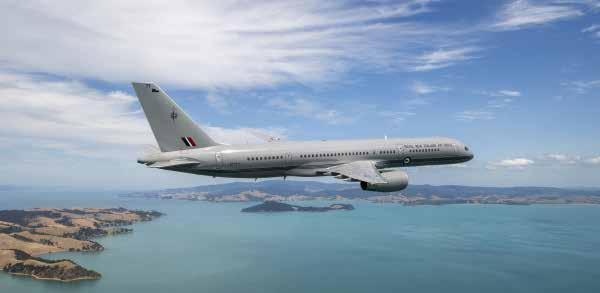
Capability Plan. Deferring or delaying crucial decisions will lead to more embarrassing failures, and a loss in confidence by both the people of the Defence Force and the wider public that the NZDF actually has the right tools for the job.
The signs are already positive. The pre-Budget announcements on the upgrade of the NH 90 helicopters show that the government is serious about ensuring that the Defence Force has the most up to date equipment. It means the Defence Force can fully interoperate with Australia and our other important defence partners, notably the Five Eyes nations.
There can be little doubt that the Capability Plan will require substantial new expenditure over the next decade, particularly in the capital-intensive services, the Air Force and the Navy.
Virtually the entire Navy fleet will need replacement ships. Both the Project Protector fleet and the ANZAC frigates need to be replaced within the next decade. This means a minimum of five ships just to maintain the existing fleet. Any significant upgrade will mean either more ships or the same number but with more capability. Or perhaps both.
Is it reasonable to continue with only two frigates? Should the replacements for the Canterbury and the two Offshore Patrol Vessels be more substantially capable?
If the answer is that more is needed, whether more ships or more capability, that will come with a big price tag. The total capital cost of these ships could easily exceed $10 billion. Just about all of this sum would need to be spent within the next decade.
When coupled with the capital requirements for the Army and Air Force, the total capital requirement for the Defence Force during the next decade is likely to exceed $20 billion. Although a large percentage of this sum will come from accumulated depreciation, there is no doubt that there will need to be a substantial injection of new capital.
My column in the Autumn edition of Line of Defence indicated that an extra $400 million capital injection will be required each year over the next decade. That would lift defence spending to 1.4% of GDP, up from the current 1.3%.
However, all that will do is ensure that existing capabilities will be replaced on a one for one basis as they come to the end of their life. It makes no allowance for actually
expanding capabilities. For instance, three frigates instead of two.
If New Zealand is to follow the example of our defence partners and actually increase capability, even to a modest extent, that will require a significant new investment, both in people and equipment. A third frigate would cost as much as $3 billion, or $300 million each year for the next ten years. It is close to an additional 0.1% of GDP per year and would, lift defence expenditure to 1.5% of GDP.
This level was achieved in 2020 and 2021 when much of the expenditure on the Poseidon P8 and Hercules C130J was made. A properly resourced Capability Plan would require a permanent lift in defence expenditure to 1.5% of GDP. This will affect not just the current government, but likely the next one as well.
Within the broader frame of government expenditure, defence spending at 1.5% of GDP can be largely achieved within the current settings. Effectively it means defence spending would be 4.5% of total government spending instead of the current 4%. Given that major defence purchase decisions take time to implement before the money is actually spent, government has the time to plan for this change in national priorities.
HII and Babcock have formed a new joint venture and entity – H&B Defence – to accelerate development of sovereign capability for the AUKUS conventional armed, nuclear-powered submarine program.
H&B Defence has been established to support all steps of Australia’s optimal pathway to sovereign nuclearpowered submarines under AUKUS Pillar 1 – including workforce, nuclear infrastructure design and build, submarine defueling and decommissioning, nuclear waste and future sustainment.
The new company combines world-leading nuclear submarine and shipbuilding experience from Australia, the United Kingdom and the United States to support Australia’s inaugural nuclear-powered submarine program under AUKUS.
“The formation of H&B Defence is an exciting day for Babcock Australasia as we continue to build on our existing and long-term partnership with the Australian Government in support of our nation’s defence,” said Babcock Australasia CEO Andrew Cridland.
Headquartered in Canberra, H&B Defence will work with government and key stakeholders from industry and academic sectors to develop a comprehensive program to promote and grow a skilled sovereign nuclear workforce in Australia.
Tim Brown AM has been appointed H&B Defence Managing Director. A 33-year veteran of the Royal Australian Navy (RAN), Mr Brown has extensive knowledge and experience of Australia’s submarine programme and Defence and Industry strategy.
Mr Brown primarily served as a submarine officer and commanded both a Collins class submarine and an ANZAC class frigate.
As the Director General Submarines and Head of the Submarine Profession, he led the submarine capability enterprise through a period of unheralded submarine
availability and high levels of workforce growth, and he played an early and instrumental role in the AUKUS security partnership.
“H&B Defence’s mission is to transform Australia’s submarine industrial landscape to position the nation to operate nuclear submarines,” said Mr Brown.
“This joint venture will focus on equipping Australia with the requisite industrial base, supply chains, and workforce required to support and manage all aspects of the nuclear-powered submarine lifecycle.”
The company board is chaired by HII’s President of the Nuclear and Environmental Services and HII Australia business lead, Michael Lempke, and includes Babcock Australasia CEO, Andrew Cridland.
“H&B marks a significant step forward in an enduring partnership,” commented Michael Lempke. “HII is excited to work through H&B Defence to leverage the deep-rooted experience and advanced methodologies from Australia, the UK, and the US to support AUKUS Pillar 1”.
“This collaboration is a fusion of resources and visions—aiming to enhance capabilities and foster innovation in submarine technologies and maritime systems to strengthen national and global security while ensuring a safe and secure future.”
HII is the leading designer, builder, maintainer, and sustainer of US Navy nuclear powered submarines, with over 60 submarines delivered in four decades.
Babcock currently sustains 100 per cent of the UK’s Royal Navy submarine fleet and owns and operates the UK’s only licensed facility for refitting, refuelling and defueling nuclear submarines.
Former Ministry of Foreign Affairs and Trade Secretary Brook Barrington appointed Secretary of Defence to replace the outgoing Andrew Bridgman on 01 July.
Acting Public Service Commissioner Heather Baggott on 05 June announced the appointment of Mr Brook Barrington as the Secretary of Defence and Chief Executive, Ministry of Defence.
“I am very pleased to appoint Mr Barrington to this role,” said Ms Baggott. “He is a seasoned public service leader with extensive experience in the national security and international relations sectors.
“His experience as a diplomat will also bring a strong international perspective and an awareness of the broader international security context in which the Ministry of Defence operates.”
The Secretary of Defence is the Government’s lead civilian advisor on strategic defence capability, emerging issues and the protection of New Zealand’s defence interests, including policy, deployments and procuring major defence equipment.
The Secretary of Defence works closely with the Chief of Defence Force and the New Zealand Defence Force to support high-quality advice to Ministers on military capability options, including international defence deployments, engagements, procurement, upgrades, replacement and repair.
Mr Barrington recently finished his term as the Acting Secretary of Foreign Affairs and Trade and Chief Executive at the Ministry of Foreign Affairs and Trade, a role he held substantively between 2015 and 2019.
He is also a former Secretary of the Department of the Prime Minister and Cabinet (2019-2024) and a former Deputy Secretary at the Ministry of Defence (2009-12). Between 2012 and 2015 he was Deputy Chief Executive at the Ministry of Justice.
Mr Barrington has held a number of senior public service leadership roles, including Chair of the Officials Committee for Domestic and External Security Coordination, and New Zealand’s lead official

for national security. He sits on the Executive Advisory Group on the Defence Policy Review.
“Mr Barrington has a demonstrated track record of building strong and effective relationships, including with Ministers,” said Ms Baggott. “He has deep experience advising the Prime Minister, Deputy Prime Minister and other Ministers, including the Minister of Defence.”
He was Ambassador to Thailand, Cambodia, Laos and Myanmar from 2006 to 2009. Prior to this role Mr Barrington was a foreign policy, trade and defence advisor at the Department of Prime Minister and Cabinet.
Between 1999 and 2002 he was deputy Head of New Zealand Mission to the European Union. From 1997 to 1999 Mr Barrington was Chief of Staff to the Secretary of Foreign Affairs and Trade.
Mr Barrington holds a PhD in history from Auckland University. He will take up his new role on 1 July 2024 for five years.
Outgoing head of the NZDF Air Marshal Kevin Short made a Companion of the New Zealand Order of Merit (CNZM) and Wing Commander Mark Whiteside receives a Distinguished Service Decoration (DSD).
Air Marshal Kevin Short has been appointed a Companion of the New Zealand Order of Merit (CNZM) in recognition of his nearly 50-year career in the NZDF, including his role as the Chief of Defence Force (CDF).
As the longest serving CDF in more than 50 years (2018 to 2024), AM Short led the NZDF through significant and unprecedented domestic and global events, including the Whakaari/White Island volcanic eruption, the COVID-19 pandemic, and the evacuation of New Zealanders from Kabul during the 2021 Taliban takeover of Afghanistan.
“I wasn’t expecting it and I was totally caught out”, said AM Short. “I feel really honoured and quite chuffed about it. I’ve spent all of my adult life dedicated to the Defence Force so it means a lot to receive this level of recognition.”
“I will wear the CNZM on behalf of everyone who serves in the Defence Force. I see this as an acknowledgement of not only my effort and dedication to service, but also that of everyone I have had the privilege of leading and working alongside,” he said.
Air Marshal Short’s citation also acknowledged his work in a resource-constrained, pandemic environment, managing complex capability updates, overseeing military and humanitarian aid operations in New Zealand and overseas and leading important initiatives in leadership and diversity.
Air Marshal Short joined the Royal New Zealand Air Force (RNZAF) in 1976 and his first role as a navigator. He received promotions to navigator leader, tactical coordinator and aircraft captain, and clocked over 5,000 flying hours in the P-3K2 Orion maritime surveillance aircraft.
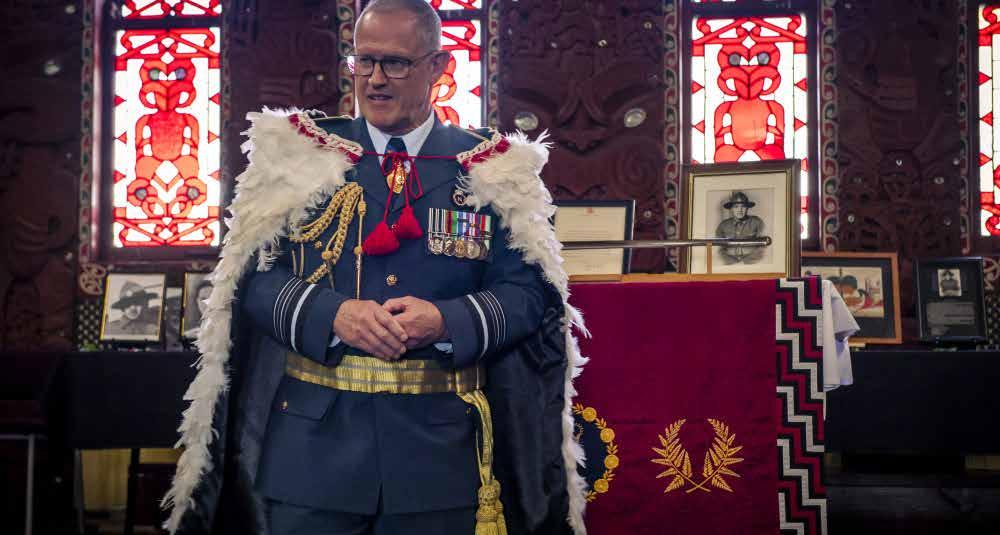
In 2006-07 he was the commander of the Provincial Reconstruction Team in Afghanistan.
Air Marshal Short has overseen inclusivity and diversity inroads within NZDF, which has been recognised with gender equality and rainbow inclusion awards.
Earlier this year he was awarded the United States’ Commander of the Legion of Merit, the Honorary Officer of the Order of Australia (Military Division) in 2022 and the Honorary Gallant Commander of the Malaysian Armed Forces (First Degree) in 2019.
The citation for AM Short’s CNZM reads:
For services to the New Zealand Defence Force Air Marshal Kevin Short has commanded at all levels of the New Zealand Defence Force (NZDF), latterly as Chief of Defence Force (CDF) from 2018 to 2024, the longest serving CDF in more than 50 years.
Air Marshal Short first joined the New Zealand Air Force in 1976. He was deployed to Afghanistan in 2006 as a Task Group Commander, providing leadership for the New Zealand Provincial Reconstruction Team in Bamiyan Province. He was appointed Deputy Chief of Air Force in 2011, later becoming Commander Joint Forces New Zealand and Vice Chief of Defence Force. His tenure as CDF has encompassed significant and unprecedented domestic and global events, from the recovery of bodies following the Whakaari/White Island volcanic eruption, the COVID-19 pandemic, to the evacuation of New Zealanders from Kabul during the 2021 Taliban takeover of Afghanistan. The pandemic saw the largest deployment of NZDF personnel in a generation, into an unfamiliar environment of establishing and operating managed isolation and quarantine facilities. He oversaw military and humanitarian aid operations domestically and overseas in a resource-constrained, pandemic environment, while also overseeing a significant update of the Capability Management System and a large re-equipment programme for NZDF. He has led The Totara Commitment, an initiative bringing together South Pacific Defence Chiefs. Air Marshal Short has overseen inclusivity and diversity inroads within NZDF, which has been recognised with gender equality and rainbow inclusion awards.
The CNZM is one of two recognitions for the NZDF in this King’s Birthday Honours list, with Wing Commander Mark Whiteside receiving a Distinguished Service Decoration (DSD). Wing Commander Whiteside has been recognised for his role in the acquisition and deliver of the P-8A Poseidon maritime patrol aircraft.
The citation for Wing Commander Whiteside’s DSD reads:

For services to the New Zealand Defence Force Wing Commander Mark Whiteside was posted to the Airborne Surveillance Maritime Patrol Integrated Project Team in early 2019 and has since been a leading figure in New Zealand’s acquisition and delivery of the P-8A Poseidon maritime patrol aircraft.
As the Project Capability Integration Lead, Wing Commander Whiteside’s approach enabled the Royal New Zealand Air Force (RNZAF) to implement training and infrastructure solutions that allowed a seamless transition from the P-3K2 Orion to the P-8A Poseidon. He produced an exemplary capability integration plan which is now widely utilised across other projects. Subsequently, as the Commanding Officer of the Poseidon Transition Unit (now 5 Squadron), he successfully led the transition of the new capability from RNZAF Base Auckland to RNZAF Base Ohakea. His leadership enabled the new unit to establish a positive culture and identity, resulting in successful integration of up to 170 personnel and their families into the RNZAF Base Ohakea community. He has overseen the achievement of initial operating milestones and has worked to ensure equity in the conditions of service for those involved with delivering the P-8A capability. Wing Commander Whiteside’s efforts have helped enhance the RNZAF’s reputation among its partners and New Zealand’s contribution to regional security with introduction of this new capability.
Victoria University’s Centre for Strategic Studies hosted a maritime security forum on 13 June, attracting 140 people in-person and more than 60 online, reports Ross Browne.

Contributor Ross Browne is Director of public affairs firm Museum Street Strategies.
Hosted by the Centre for Strategic Studies (CSS), the oneday symposium ‘New Zealand’s Maritime Security: Emerging challenges and opportunities’ attracted academics and practitioners from Aotearoa and beyond.
“New Zealand’s maritime security faces a number of challenges including intensifying strategic competition, transnational crime and the impacts of climate change,” stated the CSS’ introduction to the event. “Existing rules are under pressure and a range of emerging technologies present both risks and opportunities.”
Three plenary sessions followed opening remarks from Professor David Capie, CSS Director and VUW Professor of International Relations and a keynote address by Hon Matt Doocey, Lead Minister for Maritime Security. These were followed by workshops on ‘Emerging Technology” and ‘The Blue Economy’.
Hon Matt Doocey used the occasion to launch the revised maritime security strategy. Representing the Government, he stressed that geographic isolation doesn’t make New Zealand immune from global threats.
The government’s view is the refreshed strategy is part of a process

Hon Matt Doocey, Lead Minister for Maritime Security
to prepare New Zealand for a more disrupted world. Recent regional issues, such as challenges to the primacy of the United Nations Convention on Laws of the Sea, highlight some of the broader challenges the rules-based system faces.
Dr Bronwyn Evans-Kent (Director Defence Policy, Ministry of Defence) opened the ‘Future of Defence in the Maritime Domain’ plenary session with an overview of New Zealand’s maritime boundaries and trade routes. Dr Evans-Kent spoke about the Defence Policy Review and how it is the principal guide to defence planning and investment.
The National Security Strategy, the Defence Policy Strategy Statement and the Future Force


Design Principles provide the policy context, while the upcoming Defence Capability Plan forms the final part of the collective defence policy review process.
The clear direction of the policy process is shifting to a posture focused on promoting interests and shaping the environment, not just being ready to respond.
Proactively released cabinet papers on the trans-Tasman ministerial dialogue used more assertive language – “Deterrence is a key element of New Zealand’s national security and defence policy settings”.
Dr Evans-Kent said New Zealand will act early and deliberately to promote its interests, particularly in the Pacific. Since the Forum was held, Prime Minster Luxon
has announced increased defence cooperation with Japan, including a series of P-8 and frigate deployments to the area.
New Zealand’s articulated interests are maintaining and assuring its authority and freedom of action, across the five domains.
Defence is attempting to identify the right balance between crewed and uncrewed systems, the level of physical presence required, and policy questions associated with remotely crewed versus autonomous systems. The asset balance to maintain situational awareness in the maritime domain requires a balance between space-based sensors, aircraft, and ships.
Captain David McPherson of the Royal Australian Navy outlined the RAN’s fleet investment plan, including investment in optionally crewed vessels, nuclear attack submarines and surface fires upgrades for Hobart and Hunter class ships.
Retired Royal New Zealand Navy officer Andy Watts provided some context for the RNZN’s current fleet design process, echoing perspectives shared by the Ministry of Defence on the challenges excessive platform diversity in the fleet create.
La Trobe University Professor of International Relations Bec
Strating spoke about the broad range of challenges associated with maritime security including economic, environmental, human rights and security aspects. She noted that the complexity of interactions required a comprehensive national approach to maritime statecraft.
Prof Strating noted that Australia had a civil maritime security strategy, illustrating that Australia’s policy was not necessarily connected across civil, diplomatic, and military efforts.
Other sessions during the oneday event included traversing the implications of autonomous systems in the maritime context, the battle for influence in the Pacific, and how to support the resilience of Pacific Island communities.
International speakers included Dr Richard Heydarian, Mr Shanaka Jayasekara (UN Office on Drugs and Crime), Captain Mark Asuncion (US Navy), Captain Charles Maynard (Royal Navy), and Martin Cauchi Inglott (EU), among others.
*This issue of Line of Defence also features chief editor Nicholas Dynon’s extended interview with symposium panelist and academic and author Richard Heydarian talking about Philippines, ASEAN, South China Sea tensions, and great power competition.
The category winners of the 2023-24 Women in Security Awards Aotearoa have been announced, with outstanding female leaders recognised from across New Zealand’s broader security sector.
In its fourth year, Women in Security Awards Aotearoa (WiSAA) has once again proven a challenge for its judging panel, with winners across eight categories selected from a high quality field of nominees from across New Zealand’s security and resilience sector.
Among the winners are members/ employees of the New Zealand Defence Force, New Zealand Police, New Zealand Customs Service, nonprofit online safety charity Netsafe, and private security provider FIRST Security.
Organised by the New Zealand Security Sector Network (NZSSN)
and supported by publisher of Line of Defence Magazine Defsec New Zealand and the international Women in Security & Resilience Alliance (WISECRA), the WiSAA initiative was established in 2020 to recognise women who have advanced the New Zealand security and resilience sectors.
Nominees must be women, or identify as women, have more than three years of experience in a security or resilience-related profession, and be actively practising in Aotearoa New Zealand or working overseas in a New Zealandfocused role.

WiSAA organisers were this year honoured to be joined by an expert judging panel reflecting the skills, experience, and diversity of the sector:
• International risk management, organisational resilience, and extreme events academic and practitioner Dr Bridgette Sullivan-Taylor;
• Former New Zealand Defence Industry Association (NZDIA) CEO, IFSEC Global Influencer in Security, and 2021 WiSAA alumna Jennie Vickers;
• ASIS International Regional Vice-President, respected physical security educator and 2020 WiSAA alumna Ngaire Kelaher CPP PSP; and
• Former ASIS International New Zealand Chapter Chair and former NZSA New Zealand Security Consultant of the Year, Andrew Thorburn.
The judging panel assessed the following finalists as the top scoring candidates in their respective categories, and as such they are this year’s category winners:
Contributing to defence and international security:
Lieutenant Colonel Laura Cranston, New Zealand Defence Force
Protecting borders, trade, and biosecurity:
Janna Binning, New Zealand Customs
Countering incivility and violent extremism:
Detective Beth Bates, New Zealand Police
Safeguarding networks and people online:
Tegan Wedderburn, Netsafe
Securing organisations and infrastructure:
Gina Lindsay-Crawford, FIRST Security
Combatting fraud and misrepresentation:
Catherine Abel-Pattinson, Netsafe
Responding to natural disaster events:
Colonel Mel Childs, New Zealand Defence Force
Building resilient communities: Inspector Juanita (Whiti) Timutimu, New Zealand Police
In addition to the category winners, the WiSAA organisers also recognised several Highly Commended Runners-Up, including:
• Karoline Jacobs, Aviation Security Service
• Tamara Gould, New Zealand Customs Service
• Lance Corporal S, New Zealand Defence Force
• Kallia McFarland, Serpenti Investigations
• Pilot Officer Mikaela Heald, New Zealand Defence Force
• Danielle Kaiwai, KiwiRail
According to the organisers, this year’s WiSAA category winners and runners-up will each receive award certificates bearing their awardee citations, and the right to use the coveted awardee logo. In accordance with the WiSAA’s principles of independence, including nonsponsorship and non-profit, there is no gala awards event associated with the awards program.
It is anticipated that a call for nominations for the 2024-25 awards will be made in late 2024 with winners to be announced in time to be celebrated on International Women’s Day (08 March) 2025
LTCOL Laura Cranston
New Zealand Defence Force

LTCOL Laura Cranston is recognised for her contribution to implementing UN Security Council Resolution 1325 – Women, Peace and Security (WPS) within the NZDF and among international partners.
LTCOL Cranston was a key architect of the MOD and NZDF‘s Gender in Security Policy Statement that outlined Defence’s commitment to the UNSCR 1325 WPS Agenda. She led the growth of Gender Focal Points and Gender Advisors throughout the Services and the training of partners from the Pacific and beyond.
Among other initiatives, she is formalising training packages addressing the role of gender in nontraditional threats, such as climate change, human trafficking, and cybersecurity. Her achievements have promoted the prevention of genderbased violence, protection of human rights, fostering of development and building of resilient communities, contributing to international security.
Janna Binning
New Zealand Customs Service

Customs Technical Specialist
Janna Binning is recognised for her successes in identifying risks facing New Zealand’s border. In the first eight months of 2023, Ms Binning supported the USCBP with detecting and preventing more than 500kg of methamphetamine from reaching New Zealand (an estimated 25,000,000 doses).
Ms Binning engaged in real time information sharing with Brazilian
colleagues, US-based Immigration staff and the NZCS Integrated Targeting Operations Centre resulting in multiple drug couriers being refused entry into New Zealand.
Over three years, her work directly prevented at least 1,300 kilograms of illicit narcotics entering New Zealand. Additionally, she is an active member of the International Customs Attaché Group and Community in Washington DC, actively supporting New Zealand border security internationally.
Beth Bates New Zealand Police
Detective Beth Bates is recognised for her work in Waitemata CIB and in particular for her professionalism in preventing a potentially major incident in January 2024.
Detective Bates monitored an individual who had threatened to suicide by detonating several IEDs in Auckland’s Albert Park. Her notifying the appropriate police workgroups led to a response that included the Armed Offenders Squad, Eagle helicopter, Explosive Ordnance Disposal Squadron of the NZDF, and frontline officers. She maintained phone communication with the individual, gathering intelligence as resources were put
in place and evacuation completed. Upon attempting to detonate the IED’s the individual was thwarted by the Armed Offenders Squad and arrested.
Detective Bates’ quick thinking, tenacity, and professionalism averted potential tragedy and ensured the ongoing trust and confidence of the public was maintained.

Tegan Wedderburn is recognised for her role as a Service Manager at Netsafe Incorporated where she is responsible for leading a team of Digital Harms Resolution Officers tasked with providing quick and efficient redress for people impacted online harm.
Ms Wedderburn’s dedication and commitment was recognised in September 2023, when her team was recognised for providing outstanding customer service at the annual New Zealand Contact Centre Awards 2023. She has demonstrated a focus on continuous improvement and delivering exceptional service through expertise, dedication, and a structured, considered approach.
Passionate about supporting others who have experienced online harm, Ms Wedderburn places the client at the centre of all decisions and achieves optimal outcomes via an ability to build rapport with anyone, no matter their circumstances. She is committed to nurturing and
growing talent, and in particular, supporting young women to reach their potential.
Gina Lindsay-Crawford FIRST Security

Client Services Manager Gina Lindsay-Crawford is recognised for implementing a range of initiatives that have improved the security posture of several nationally significant customer organisations across a range of critical sectors, including financial services, communications, and local and national government.
Ms Lindsay-Crawford’s engagement style and innovative solutions focus have been identified by several FIRST Security customer organisations as having driven positive security outcomes. These include tailored customer-specific training packages, as well as an online ordering system for the booking of specialised Security Officers in response to concerns over the safety of a customer’s field teams.
During the 2023 Auckland floods, Ms Lindsay-Crawford took charge of a significant local government contract, successfully managing a large guard force at very short notice to cordon off flooddamaged suburbs, ensuring that her staff were safe and equipped to protect the community.
Catherine Abel-Pattinson
Netsafe


Catherine Abel-Pattinson is recognised for her strategic foresight, her holistic approach to combating online financial scams, and her role in securing a partnership with CYBERA, and have significantly fortified New Zealand’s fraud recovery for New Zealanders losing money to offshore accounts and within blockchain.
As the Chief Operations Officer of Netsafe and through previous strategic governance roles, Catherine has cultivated a deep understanding of the complexities surrounding online fraud and online harm. Her leadership is characterised by a proactive stance on digital threats, emphasising the importance of strategic partnerships and community engagement in creating a secure online environment for New Zealanders.
The CYBERA partnership has been instrumental in developing robust mechanisms for New Zealanders victimised by online financial and bitcoin scams, particularly those involving funds transferred to offshore accounts. Through the initiative, victims have been able to recover their lost funds, contributing significantly to the national effort against digital fraud.
Colonel Mel Childs is recognised for her role as Commander of the New Zealand Defence Force’s Deployable Joint Interagency Task Force in which she led the NZDF response to Cyclone Gabrielle in affected areas across the North Island in February 2023.
COL Childs coordinated around 1,000 personnel across New Zealand while liaising with other agencies and stakeholders under extreme political and time pressure. Her team excelled under her leadership – matching her enthusiasm by responding with the same tireless work ethic and impassioned focus on delivery.
Colonel Childs’ calm and professional nature, combined with her command presence and competence, led to a highly successful response by the Defence Force, utilising assets and people from the Royal New Zealand Navy, New Zealand Army and Royal New Zealand Air Force. Colonel Childs is recognised as an exceptional role model for wāhine, not only in uniform but across the country.
Inspector Juanita (Whiti) Timutimu New Zealand Police

Inspector Juanita (Whiti) Timutimu is recognised for her role as Chief Advisor Partnerships in New Zealand Police and as a board member of Eastern Central Community Trust, and in particular for her role in supporting Tairawhiti communities affected by cyclone and flooding events culminating in Cyclone Gabrielle in February 2023.
Inspector Timutimu went above and beyond in response to these extreme weather events to support communities in need. Her relationships with hapū and Iwi led to a rapid turnaround in support, making food, emergency supplies and medication and essential items available, and allowing communities to support themselves.
Inspector Timutimu’s actions and leadership contributed to the establishment of a long term climate change-focused funding arrangement, increasing the resilience of communities within Eastern Central Community Trust catchment to future events. She is recognised as a role model for the Police Commissioners priority of ‘focussed prevention through Strategic Partnerships’
In this exclusive interview, chief editor Nicholas Dynon sits down with academic, columnist and author Richard Heydarian to explore what makes ASEAN a donkey and why Philippines connects the South China Sea and Taiwan Strait.

Richard Javad Heydarian is an Assistant Professor in political science at De La Salle University, and previously a policy adviser at the Philippine Congress.
As Chinese Premier Li Qiang was working through his official visit itinerary only blocks away in downtown Auckland, I met for the first time the widely lauded Philippines, ASEAN, and global affairs specialist Richard Heydarian.
Professorial Chairholder in Geopolitics at the Polytechnic University of the Philippines and author of, among others, The IndoPacific: Trump, China and the New Struggle for Global Mastery, Richard is a regular contributor to Centre for Strategic and International Studies (CSIS) and Council on Foreign Relations (CFR).
I had an hour and a half to interview Richard at the invitation of the Asia New Zealand Foundation Media Centre prior to his next speaking engagement at a roundtable hosted by the Centre at a trendy restaurant in Britomart. And what an hour and a half it was!
Just the day before he had been a panel speaker at the Victoria University of Wellington Centre for Strategic Studies’ one-day symposium ‘New Zealand’s Maritime Security: Emerging challenges and opportunities’. It seemed a natural place from which to launch into the interview. What follows is part-one of an abridged version.
ND: What did you speak on at the maritime security symposium?
RH: My talk was on ‘the 50 Shades of hedging’, which is how I refer to Southeast Asian countries coping with the US-China rivalry. None of us want to make a definitive choice between the two sides, even the Philippines, which is a US treaty ally.
But it’s a wide spectrum. There is a Malaysian way of doing it. In fact, there’s a Anwar Ibrahim Malaysian way of doing it, then a Mahathir of 2018 versus Mahathir of 2019 way of doing it. In the Philippines, there’s an early Duterte way of doing it, and there’s a late Duterte way of doing it… and there’s a Marcos Jr way of doing it.
What we see are not only a variety of strategies that individual Southeast Asian countries are employing to not only survive but thrive in this era of great power competition, but also internal fault lines, internal debates. Some Southeast Asian countries are obviously not as democratic as others, but the reality is that even in the more authoritarian systems there are lively debates behind the scenes, and sometimes that seeps into the open.
I think the most dramatic of these is the case of Vietnam, where

what we’re now seeing feels like a kind of Sovietology – how it would have felt watching the Soviet Union from Khrushchev to Brezhnev and
its final years – whereby there’s no democracy, there’s no contestation outside the party, but all the drama is inside.

And I think the drama has not yet settled considering the number of presidents they’ve been firing over the past few years, and the complete reshuffle of their politburo.
I say this as someone who has been dealing with Vietnam since 2013, when we filed the arbitration case against China on the South China Sea. Us Filipinos have always found the Vietnamese our natural ally in the region because no other country in the region has been as pesky and plucky in dealing with the Chinese.
The level of domestic upheaval we’re seeing is quite astonishing, and it is influencing the extent to which Vietnam will be willing to engage in the kind of pushback [against China] that has been expected of it [previously]. I think the concern of the emerging regime in Vietnam is more around colour revolutions and economic stability, and therefore they have more than enough incentive to keep things on an even keel with China.
Having said that, I did support and commend the visit by President Marcos Jr. to Vietnam earlier this year. And that was about mini-lateral cooperation.
The context of my symposium speech was that ASEAN is broken. We’re at the ontological level of debates right now – Is ASEAN a cow? Or is it a horse? As crazy as it sounds, the cow versus horse idea of [former Singaporean Ambassadorat-Large] Kausikan Bilahari is that ASEAN is not the kind of a beast that can be trained and then efficiently get things across the line. It’s more like a cow that does what it wants and once in a while listens to you. So, in short, don’t expect too much.
I think though that ‘donkey’ would be best for describing ASEAN in the sense that a donkey is not as fast and agile and powerful as a horse, but it does get things done. My hope for ASEAN is to be a donkey.
But I don’t think we can be a donkey unless we complement deficits in our multilateralism, which is inherently broken due to being unanimity-based on anything security.
So, when one country says ‘no’, nothing happens. It’s no surprise then that in relation to Myanmar [ASEAN] is completely useless. In relation to the South China Sea it is completely useless. It’s just takes one country for nothing to happen. In this situation, mini-lateralism is the only way forward. So what I’m watching very carefully right now are the conversations between Anwar and Marcos and Vietnam.
The dark horse here is Indonesia, because we really don’t know where [President-elect] Prabowo will go. My contention is that Prabowo could turn out like a Marcus Jr, meaning not the best name, quite notorious, not a history that inspires a lot of confidence, a lot of schmoozing with China. And yet, someone who is a product of Western education and speaks English. He understands things, and I think has a big enough ego to understand that Indonesia should not be just a factotum to a country like China.
Indonesia is big enough itself to exercise influence as the de facto big brother in the region and G20 power. It is important to get Indonesia on board, because while Indonesia is not a direct claimant to the South China Sea disputes, it does have maritime disputes with China in the North Natuna Sea. China is just so vague, and so greedy, and so ambiguously aggressive about its strategy.
It’s just unlucky that Philippines suddenly went from Duterte passivity to the kind of proactiveness that you would expect from a country like the Philippines, while in the meantime, Indonesia and Malaysia have been relatively quiet because they’ve got what they wanted.
Malaysia did the drilling in 2020-21, which kept things on an

even keel. The price they paid for that was to attack AUKUS, and they kind of got away with that too. The Indonesians have some understanding of North Natuna, and they just finished Bandung-Jakarta railway project, so they got that done.
But then again, this is a boxing match, and we’re just at Round Four or Five. So if anyone thinks this is the final story, it is not. We’re still in the middle rounds here, which could be crucial and could determine the trajectory of the region and of USChina competition
The US has a treaty alliance with the Philippines, so great power
competition is directly attached to the South China Sea disputes.
ND: There’s been something of a rush by those countries in the region with a treaty or agreement with the US to look at the fine print of these, concerned about what they exactly mean if push was to come to shove? If push were to come to shove with China, will the US be standing by the Philippines?
RH: Look at what the US has been doing in Ukraine, even though Ukraine is not a NATO member and a much more problematic political
economy, to put it mildly. Kudos to Zelenskyy for really mobilising things.
As people may know, Zelenskyy dropped by Manila, because the Philippines is the only Southeast Asian country that has, based on the principle of neutrality, actually voted in favour of Ukraine consistently in the United Nations. There are very few counties in Asia that have voted based on principle.
The Shangri-La Dialogue was even more important for what happened during the question and answer portion. If you look at President Marcos Jr’s keynote speech it was a very balanced speech with Marcos Jr effectively saying, “I’m here still extending the olive branch. I’m not choosing between US and China, we still need them.”
But during the question and answer portion the response of the President was very clear: “If a Filipino gets killed, I don’t care what you use; you use water cannons, actual cannons, laser, then we’re having a different conversation here.”
From Kissinger to Obama, America’s policy was strategic ambiguity, which is more ambiguous than strategic because obviously it didn’t work.
I understand why Kissinger did it. In the 70s, the Philippines was a little Bogeyman. We had the most advanced armed forces, we had all the state of the art weapons systems. We had the F35s and Abram tanks of that era. The Americans were worried that we might bully the rest, and then should China or Vietnam respond aggressively, dragging in Big Brother, it would be an unnecessary disruption from their Cold War priority of triangulating against the Soviet Union.
That’s why the US said they were not going to allow the Philippines to weaponise the mutual defence treaty for self-aggrandisement. Our “territorial self-aggrandisement” is literally what Kissinger put

in his cable as a basis for Nixon administration policy. And then, by the 1990s, when the Americans left because they didn’t see the reason for spending so much on Clark [Air Base] and Subic [Naval Base], they just abandoned us on Mischief Reef and during the Scarborough Shoal in 2012. Complete ambiguity. No strategy.
And that’s why Richard Fontaine [CEO of the Centre for a New American Century] calls it the “lost decade”. This was the 2010s when the South China Sea was not as dominated by China as it is today. It was really in 2019 when Pompeo came to Manila on the side-lines of Trump’s Hanoi, North Korea circus that he clarified that any attack on Philippine public vessels, or aircraft, or soldiers, or warships, will activate mutual defence treaty in the South China Sea.
At least the Trump administration narrowed the ambiguity significantly, which was also picked up by Biden administration – so it has been a bipartisan. The problem though is that the Chinese are very adept at grey zone strategy, so what we’re doing now is moving from a modality-based understanding of the parameters of the mutual defence treaty to an outcome-oriented one. In other words, “I don’t care what weapon systems or non-weapon systems you use, if you kill a Filipino,
if someone gets injured, or something lethal happens, then the mutual defence treaty can be activated.”
It’s not a debate whether the Americans would come to our assistance or not. Whether you’re talking to top Republicans who could be serving in Trump 2.0, or you’re talking to Biden’s people, everyone understands that China is the real deal as far as threat to America is concerned.
So if you’re willing to give tens of billions of dollars to an ally in the Middle East, give tens of billions of dollars to a non-NATO partner in Eastern Europe, there’s just no way you cannot do anything about the Philippines – precisely because the Philippines is part of a second Theatre, which is Taiwan. There’s no way that you can separate the Philippines from the Taiwan issue.
My contention is that the reason why China is so aggressive to the Philippines – you might say excessively and recklessly aggressive – is because they’re worried about what we’re going to do on the Taiwan question.
ND: So, is this ultimately, given China’s interests, a South China Sea issue or an East China Sea issue?
RH: We’re seeing that the some of the vessels that China has been using in the Taiwan Strait are now also operating in the South China Sea. So now it’s an integrated theatre operationally and strategically, and we’re responding accordingly.
And the big game right now is missile defence systems, because the Chinese have complete dominance when it comes to missile defence. The lasagne layers of anti-cruise missile systems they have is their advantage here. To match that properly, it could be the sovereign prerogative of Japan and the Philippines to host American missile defence systems. The US has enough of these in Guam

and in some of the bases in Japan in the scenario that China pushes things all the way to the Western Pacific. But if we’re looking narrowly at the Taiwan Strait, it’s far from enough.
So the worry of the Chinese –and they’re planning over this – is that the Philippines will give the Americans maximum access to sovereign bases just 100 nautical miles away from the Taiwan Strait. That’s extremely close.
ND: How likely is that to happen? In your view?
RH: That’s where we have leverage. My contention is that war is very unlikely for the foreseeable future for a million reasons. The Taiwan issue is a game of deterrence. And the deterrence game will be dependent on how much everyone chips in. Maybe the Japanese are way ahead of us, the Australians are being dragged
into this in one way or another. You in New Zealand are having your debates whether you’re going to be dragged in via Australia or AUKUS, etc.
For the Philippines, the way I see it is that we don’t need to go 10 out of 10, we can go three or four out of 10, and we’ll still have sufficient preparedness and loyalty to our alliances.
So what the Philippines should do is make it clear to the Chinese, “if you continue to do what you’re doing in the South China Sea, if you’re going to force us out of the Second Thomas Shoal using extremely violent means, we’re going to give the Americans everything they want and you’re going to regret that for the rest of your lives. And what, you’re going to bomb us? You’re not going to do that, so be careful!”
The Chinese are thinking that if they bully us in the South China Sea we’ll get scared and roll back. What
they don’t know is that actually the leverage is now with the Philippines, because it’s not China’s business what we do with our bases.
Now there are folks who will disagree with me and say “no, no, the situation is far more alarming than you suppose,” and that the worst case scenario is not us losing the South China Sea but the PRC becoming our immediate neighbour to the north by occupying Taiwan. But my point is that argument is a little bit premature.
I don’t think we’re at that phase yet. I think we’re still in the phase of leveraging and hedging. The Philippines is still in an hedging situation.
Part-Two of this interview will be published in the Spring 2024 issue of Line of Defence Magazine and online. We are grateful to the Asia New Zealand Foundation Media Centre for arranging the interview.

The qualification develops and advances critical research, critical thinking and writing, analytical best practice as well as exploring relevant twentieth and twenty-first century intelligence operations. It is aimed at those wishing to develop advanced critical skills in relation to their existing or prospective intelligence sector careers in New Zealand.
Graduates of this year long programme will possess an advanced knowledge of intelligence analysis processes, be grounded in relevant previous operational intelligence experiences and have a critical understanding of the ethical and professional issues involved.
The programme of study consists of two 30-credit courses:
Qualification Requirements
Semester ONE, 294741: Intelligence in the International Security Environment
A critical examination of intelligence theory and practice, focusing on key concepts and methodologies of intelligence collection and analysis, analytical tools, frameworks and concepts applied to investigations and operations in the contemporary international security environment.
Course Controller:
Dr Rhys Ball, Centre for Defence and Security Studies (Auckland)
Semester TWO, 294744: Intelligence Operations
A comprehensive grounding in the operational intelligence environment in the second half of the 20th century, into the 21st century. Participants will consider the development of intelligence practices both in New Zealand and around the world, from the evolution of intelligence contributions from the end of World War Two, to the intelligence challenges of the 2020s. Intelligence operations are critically reviewed, including intelligence success and failure, espionage against friends and allies, and policing and private intelligence formats.
Course Controller:
Dr John Battersby, Senior Fellow, Centre for Defence and Security Studies (Wellington)
To enroll in this qualification, students must have been awarded or qualified for a relevant Bachelor's degree, or be able to demonstrate scholarly work in conjunction with extensive relevant professional experience for Admission with Equivalent Status.
For further information, please contact John: j.m.battersby@massey.ac.nz, or Rhys: r.ball@massey.ac.nz.


Just released, the Stockholm International Peace Research Institute Yearbook 2024 reports that nuclear weapons in development have increased as states deepen their reliance on nuclear deterrence.
The nine nuclear-armed states—the United States, Russia, the United Kingdom, France, China, India, Pakistan, the Democratic People’s Republic of Korea (North Korea) and Israel—continued to modernise their nuclear arsenals and several deployed new nuclear-armed or nuclear-capable weapon systems in 2023.
Of the total global inventory of an estimated 12,121 warheads in January 2024, about 9,585 were in military stockpiles for potential use (see the table below). An estimated 3,904 of those warheads were deployed with missiles and
aircraft—60 more than in January 2023—and the rest were in central storage.
Around 2,100 of the deployed warheads were kept in a state of high operational alert on ballistic missiles. Nearly all of these warheads belonged to Russia or the USA, but for the first time China is believed to have some warheads on high operational alert.
“While the global total of nuclear warheads continues to fall as cold war-era weapons are gradually dismantled, regrettably we continue to see year-on-year increases in the number of operational nuclear

warheads,” said SIPRI Director Dan Smith. “This trend seems likely to continue and probably accelerate in the coming years and is extremely concerning.”
India, Pakistan and North Korea are all pursuing the capability to deploy multiple warheads on ballistic missiles, something Russia, France, the UK, the USA and— more recently—China already have. This would enable a rapid potential increase in deployed warheads, as well as the possibility for nuclear-armed countries to threaten the destruction of significantly more targets.
State by state
Russia and the USA together possess almost 90 percent of all nuclear weapons. The sizes of their respective military stockpiles (i.e. useable warheads) seem to have remained relatively stable in 2023, although Russia is estimated to have deployed around 36 more warheads with operational forces than in January 2023.
Transparency regarding nuclear forces has declined in both countries in the wake of Russia’s full-scale invasion of Ukraine in February 2022, and debates around nuclearsharing arrangements have increased in saliency.

Notably, there were several public claims made in 2023 that Russia had deployed nuclear weapons on Belarusian territory, although there is no conclusive visual evidence that the actual deployment of warheads has taken place.
In addition to their military stockpiles, Russia and the USA each hold more than 1200 warheads previously retired from military service, which they are gradually dismantling.
SIPRI’s estimate of the size of China’s nuclear arsenal increased from 410 warheads in January 2023 to 500 in January 2024, and it is expected to keep growing. For the first time, China may also now be deploying a small number of warheads on missiles during peacetime.
Depending on how it decides to structure its forces, China could potentially have at least as many intercontinental ballistic missiles (ICBMs) as either Russia or the USA by the turn of the decade, although its stockpile of nuclear warheads is still expected to remain much smaller than the stockpiles of either of those two countries.
“China is expanding its nuclear arsenal faster than any other country,” said Hans M. Kristensen,
Associate Senior Fellow with SIPRI’s Weapons of Mass Destruction Programme and Director of the Nuclear Information Project at the Federation of American Scientists (FAS). “But in nearly all of the nuclear-armed states there are either plans or a significant push to increase nuclear forces.”
Although the UK is not thought to have increased its nuclear weapon arsenal in 2023, its warhead stockpile is expected to grow in the future as a result of the British government’s announcement in 2021 that it was raising its limit from 225 to 260 warheads. The government also said it would no longer publicly disclose its quantities of nuclear weapons, deployed warheads or deployed missiles.
In 2023 France continued its programmes to develop a thirdgeneration nuclear-powered ballistic missile submarine (SSBN) and a new air-launched cruise missile, as well as to refurbish and upgrade existing systems.
India slightly expanded its nuclear arsenal in 2023. Both India and Pakistan continued to develop new types of nuclear delivery system in 2023. While Pakistan remains the main focus of India’s nuclear deterrent, India appears to be placing
growing emphasis on longer-range weapons, including those capable of reaching targets throughout China.
North Korea continues to prioritise its military nuclear programme as a central element of its national security strategy. SIPRI estimates that the country has now assembled around 50 warheads and possesses enough fissile material to reach a total of up to 90 warheads, both significant increases over the estimates for January 2023.
While North Korea conducted no nuclear test explosions in 2023, it appears to have carried out its first test of a short-range ballistic missile from a rudimentary silo. It also completed the development of at least two types of land-attack cruise missile (LACM) designed to deliver nuclear weapons.
“Like several other nucleararmed states, North Korea is putting new emphasis on developing its arsenal of tactical nuclear weapons,” said Matt Korda, Associate Researcher with SIPRI’s Weapons of Mass Destruction Programme. “Accordingly, there is a growing concern that North Korea might intend to use these weapons very early in a conflict.”
Israel—which does not publicly acknowledge possessing nuclear
weapons—is also believed to be modernising its nuclear arsenal and appears to be upgrading its plutonium production reactor site at Dimona.
Tensions over Ukraine and Gaza wars
Nuclear arms control and disarmament diplomacy suffered more major setbacks in 2023. In February 2023 Russia announced it was suspending its participation in the 2010 Treaty on Measures for the Further Reduction and Limitation of Strategic Offensive Arms (New START)—the last remaining nuclear arms control treaty limiting Russian and US strategic nuclear forces. As a countermeasure, the USA has also suspended sharing and publication of treaty data.
In November Russia withdrew its ratification of the Comprehensive Nuclear-Test-Ban Treaty (CTBT), citing ‘an imbalance’ with the USA, which has failed to ratify the treaty since it opened for signature in 1996. However, Russia confirmed that it would remain a signatory and would continue to participate in the work of the Comprehensive Nuclear-TestBan Treaty Organisation (CTBTO).
Meanwhile, Russia has continued to make threats regarding the use of nuclear weapons in the context of Western support for Ukraine. In May 2024 Russia carried out tactical nuclear weapon drills close to the Ukrainian border.
“We have not seen nuclear weapons playing such a prominent role in international relations since the cold war,” said Wilfred Wan, Director of SIPRI’s Weapons of Mass Destruction Programme. “It is hard to believe that barely two years have passed since the leaders of the five largest nuclear-armed states jointly reaffirmed that “a nuclear war cannot be won and must never be fought”.”
An informal agreement reached between Iran and the USA in June 2023 seemed to temporarily de-

escalate tensions between the two countries, which had intensified over Iran’s military support to Russian forces in Ukraine.
However, the start of the Israel–Hamas war in October upended the agreement, with proxy attacks by Iran-backed groups on US forces in Iraq and Syria apparently ending Iranian–US diplomatic efforts. The war also undermined efforts to engage Israel in the Conference on the Establishment of a Middle East Zone Free of Nuclear Weapons and Other Weapons of Mass Destruction.
More positively, the June 2023 visit to Beijing by the US secretary of state, Antony Blinken, seems to have increased space for dialogue between China and the USA on a range of issues, potentially including arms control. Later in the year the two sides agreed to resume military-tomilitary communication.
The impacts of the wars in Ukraine and Gaza are visible in almost every aspect of the issues connected to armaments, disarmament and international security examined in the Yearbook.
Beyond these two wars—which took centre stage in global news reporting, diplomatic energy and
discussion of international politics alike—armed conflicts were active in another 50 states in 2023. Fighting in the Democratic Republic of the Congo and Sudan saw millions of people displaced, and conflict flared up again in Myanmar in the final months of 2023.
Armed criminal gangs were a major security concern in some Central and South American states, notably leading to the effective collapse of the state in Haiti during 2023 and into 2024.
“We are now in one of the most dangerous periods in human history,” said Dan Smith, SIPRI Director. “There are numerous sources of instability—political rivalries, economic inequalities, ecological disruption, an accelerating arms race. The abyss is beckoning and it is time for the great powers to step back and reflect. Preferably together.”
The SIPRI Yearbook is a compendium of cutting-edge information and analysis on developments in armaments, disarmament, international security, and non-proliferation issues. The Yearbook also presents data and analysis on developments in world military expenditure, international arms transfers, arms production, multilateral peace operations, armed conflicts and more.
In the latest Global Terrorism Index 2024 report from the Institute for Economics and Peace, terrorism deaths spike internationally despite a drop in incidents in the West
While terrorism deaths in the West have hit a 15-year low, the global terrorism death count is at a sevenyear high, and Central Sahel is the new epicentre of international terrorism. That’s according to the latest Global Terrorism Index Report.
Now in its eleventh year, the annual Global Terrorism Index (GTI) is developed by the Institute of Economics and Peace (IEP) and provides the most comprehensive resource on global terrorism trends.
“The last twelve months resulted in the most lives lost to terrorism than in any period since 2017,” stated Steve Killelea, Founder & Executive Chairman, IEP.
“Conflict remains the primary driver of terrorism, yet most wars in the 21st century have been unwinnable and very costly. Terrorism also thrives in areas of political instability; it is imperative that current political tensions and minor conflicts do not escalate and that current conflicts are resolved, otherwise further increases in terrorism are likely.”
The Global Terrorism Index 2024 report provides a summary of the key global trends and patterns in terrorism over the last decade, up to and including 2023. Among the report’s key findings:

Terrorism deaths highest since 2017
Deaths caused by terrorism increased by 22% to 8,352 in 2023, the highest level since 2017. Even when excluding the October 7th Hamas attacks on Israel, deaths would still have increased by 5%.
This is despite terrorist incidents decreasing by 22% to 3,350, resulting in a 56% increase in the average number of people killed per attack. This is the worst rate in almost ten years.
“Terrorism had been falling or remaining steady for several years prior to 2023, with substantial falls from 2015 to 2019 followed by several years of minor fluctuations,” states the Report. “However, the last 12 months saw the largest percentage increase in terrorism since the inception of the GTI, even as total attacks fell considerably.
In 2023, the US accounted for 76% of terrorism-related deaths in Western democracies, amid a 15-year low in incidents.
Terrorism incidents in Western democracies recorded a drop of 55% compared to the previous year. There were 23 attacks that resulted in 21 fatalities, marking a 15-year low. However, the US recorded 76% of these fatalities from seven attacks. Five of these attacks were linked to individuals with far-right beliefs yet none had an affiliation with a far-right group.
In OECD countries, many of which are Western democracies, socio-economic factors such as youth unemployment, military expenditure, lack of confidence in the press and lower inequality-adjusted life expectancy correlate significantly with the GTI.
The epicentre of terrorism has shifted out of the Middle East and into the Central Sahel region of sub-Saharan Africa, which now accounts for over half of all deaths from terrorism
Despite the Hamas attacks of October 7th, the number of terrorist incidents fell in the Middle East, along with North Africa, Europe, and North America.

The central Sahel region has conclusively overtaken the Middle East as terrorism’s epicentre with Islamic State (IS) and Jamaat Nusrat Al-Islam wal Muslimeen (JNIM), a franchise of Al-Qaeda, being the most active terrorist organisations.
Organised crime and terrorism have merged in the Sahel with groups forming complex alliances and fuelling the persistence of terrorist activities in the region.
Terrorist organisations sometimes integrate with organised crime groups or provide protection and safe passage for illicit trade in drugs, human trafficking and precious metals. The region has seen a surge of kidnapping since 2017, with incidents increasing from 78 to over 1,000 in 2023 and generating significant revenues for terrorist organisations.
Burkina Faso most impacted
Burkina Faso suffered the worst impact from terrorism in 2023, with deaths increasing by 68% despite attacks decreasing by 17%. Terrorism in the country has deteriorated every year since 2014. Neighbouring Mali and Niger also deteriorated in 2023.
“In the 13 years that the GTI covers, it is the first time a country other than Afghanistan or Iraq has been top of the index,” states the Report. “Almost 2,000 people were killed in terrorist attacks in Burkina Faso from 258 incidents, accounting for nearly a quarter of all terrorist deaths globally.”
Pakistan recorded the most incidents of any country, with 490 attacks that resulted in 689 deaths. This is the fourth successive year where both deaths and incidents have increased in the country.
Ten countries account for most deaths
Terrorist activity remains highly concentrated in a small number of countries, with just ten countries accounting for 87% of all terrorism deaths in 2023. These include Burkina Faso, Israel, Mali, Pakistan, Syria, Afghanistan, Somalia, Nigeria, Myanmar, and Niger.
The concentration of terrorist activity has intensified over the past decade, with the number of countries recording at least one death from terrorism falling from 57 in 2015 to 41 in 2023.
Conflict remains primary driver of terrorism
Violent conflict remains the primary driver of terrorism, with over 90% of attacks and 98% of terrorism deaths in 2023 taking place in countries in conflict. All ten countries most impacted by terrorism in 2022 were also involved in an armed conflict.
The intensity of terrorism in conflict is also much higher than in non-conflict countries, with an average of 2.7 fatalities per attack compared to 0.48 fatalities.
Iraq shows biggest improvement
Iraq recorded the largest improvement in the last decade with deaths from terrorism falling by 99% since the 2007 peak, to 69 in 2023.
Iraq is no longer amongst the ten countries most impacted by terrorism, with total deaths falling 65% in the past year. Prior to 2023, Iraq had been ranked in the top ten every year since the inception of the Global Terrorism Index. Total deaths have fallen 99% since their peak in 2007, with incidents falling 90%.
“Afghanistan has also seen a significant improvement in the impact of terrorism, with deaths and incidents

falling 84 percent and 75 per cent respectively since 2007,” states the report.
The GTI Report noted that because it does not include acts of state repression and violence by state actors, acts committed by the Taliban are no longer included in the scope of the report since the group’s ascension to power.
The deadliest terrorist incident in 2023 was the October 7th Hamas-led attack in Israel which killed 1,200 people. It was the largest single terrorist attack since 9/11, and one of the largest terrorist attacks in history. Its consequences are still unfolding, with more than 30,000 Palestinians killed by Israel’s retaliatory military operation by mid-February 2024.
Tensions between Palestine and Israel prior to the conflict were already at an all-time high and the security situation in Israel had been deteriorating. Over 2,500 instances of communal violence in Israel and Palestine were recorded in the first ten months of 2023, compared to less than 500 in 2016.
“Globally, we have seen real gains in recent years in our fight against terrorism, particularly in Western democracies,” stated Steve Killelea. “However, left unchecked regional instabilities could fan the flames of a new wave of terrorism. It is therefore important that global policymakers focus international efforts to address the current global conflicts and prevent the Gaza conflict from spreading.”
Of the 3,350 terrorist attacks recorded in 2023, 54% were attributed to a group. IS and its affiliates remained the world’s deadliest terrorist group, responsible for 1,636 deaths, despite its attributed deaths falling by 17%. IS was followed by Hamas, JNIM, and Al-Shabaab. Together, they were responsible for over 75% of terrorism-related deaths globally. A decade ago, they were responsible for less than 25%.
In 2023, IS attacks occurred in six of the nine GTI regions: Asia-Pacific, Europe, MENA, sub-Saharan Africa, Russia and Eurasia and South Asia. In the Middle East, Syria was the country most affected by IS attacks. It recorded 224 attacks, an increase from 152 in 2022, and a quarter of all IS related deaths.
Using machine learning techniques, researchers were able to attribute an additional 15,000 deaths to IS since 2007, increasing the total number of attributed deaths from 25,000 to 40,000.
Terrorism is not the deadliest form of violence in the world. Armed conflict results in nine times more fatalities than terrorism, homicide over 45 times more, and deaths from suicide 72 times higher. However, terrorism has a uniquely disturbing psychological and social impact intended to traumatize the whole of society, rather than the individual.
The GTI, developed by the Institute for Economics & Peace, provides a comprehensive summary of the key global trends and patterns in terrorism over the last 15 years.
RISK 360°: A HOLISTIC VISION FOR FUTURE RESILIENCE
23 - 24 JULY 2024
AOTEA CENTRE, AUCKLAND
Risk NZ and Brightstar are excited to collaborate again on the New Zealand’s premiere risk summit in 2024, after a fabulous summit at Takina Convention Centre in Wellington, in August 2023.
RISKNZ MEMBER DEALS AVAILABLE
ORGANISATIONAL RISK
PSYCHOSOCIAL RISK
TECHNOLOGY RISK
CLIMATE AND ESG RISK

risknzsummit.co.nz
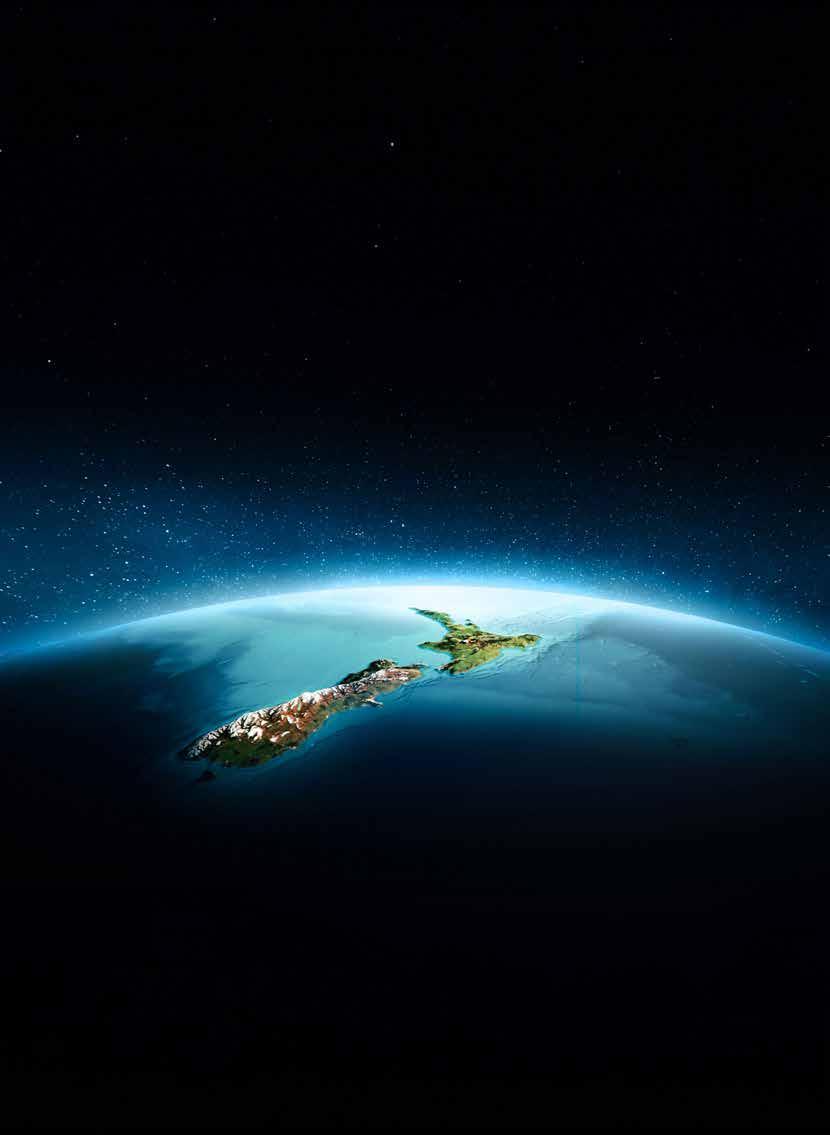
9.00 Welcome from the MC
Nick Dynon, Enterprise Security Risk Manager, Optic Security Group
9.10 Welcome from Risk NZ
9.20 International Guest: Building organisational resilience
Andre Le Duc, Chief Resilience Officer, University of Oregon (USA)
9.50 Geopolitical Update
Sophie Heading, Global Risks Lead, World Economic Forum (UK)
10.20 Morning break
10.50 Unlocking Potential: The expanding role of GRC in modern business operations
Brad Smith, Principal Consultant, Camms Group
11.20 Case Study: Empower your teams
Meena Patel, National Risk and Assurance, Fire and Emergency New Zealand

11.40 Case Study: Risk reimagined: The future of risk measurement
Ben Lynch, Senior Risk Business Partner, Fonterra
12.00 Strategic risk leadership panel: Owning, navigating and collaborating
Paul Quiroga, Portfolio Risk Manager, Kainga Ora
Sharyn Reichstein, Chief Risk Officer, Tower NZ
12.40 Lunch break
1.40 Keynote: What is psychosocial risk and how to measure it?
Hillary Bennett, Director, Leading Safety
2.10 Case Study: Critical risk and a control protection framework
Max Riley, Head of Business Resilience, Chorus
2.30 Addressing psychosocial risk and driving workplace performance - Key considerations for executives and Boards
David Burroughs, Chief Mental Health Officer, Westpac (AUS)
2.50 Panel Discussion: Effective psychosocial risk measurement and practical applications for actionable outcomes
Moderated by : Jennie Vickers, Risk & Audit Lead, Tuatahi First Fibre
Jay Barrett, Workplace Psychologist, Glia
Gareth Beck, Safety, Wellbeing & Risk Business Partner – Retail, Z Energy
Deborah Pitout, Health and Safety Lead, ASB
3.30 Afternoon break
4.00 Keynote: Recognising and preparing for crisis –Pre-emptive behaviours and structure
Captain Hugh Pearce, Head of Flight Operations – Emergency Management Team Chair - Deputy Chief Pilot Senior Person Air Operations Operations Integrity & Safety, Air New Zealand
4.30 Panel Discussion: What is the future looking like?
David Turner, Chief Executive Officer, RiskNZ
Bryan Whitefield, Director, Bryan Whitefield
Consulting (AUS)
Andre Le Duc, Chief Resilience Officer, University of Oregon (USA)
5.10 Summary remarks & Awards and networking event
9.00 Welcome back from the MC
Nick Dynon, Enterprise Security Risk Manager, Optic Security Group
9.10 Keynote: Emerging technologies, transformation and risk management: Navigating the future Glen Willoughby, Chief Executive, Nilo
9.40 Case Study: Leading a cyber-attack response team
Richard Harrison, Head of Cyber and Technology Risk, Foodstuffs South Island
10.05 Panel Discussion: Demystifying AI - Safe Implementation & the Road Ahead
Facilitator: Dr Maria Pozza, Director – Lawyer, Gravity Lawyers
Andrew McPherson, Chief Information Officer, SkyCity Prabhu Singh, Director of Transformation, Sky Network Television
10.40 Morning break
11.10 Roundtables
12.20 Lunch break
1.20 Keynote: Navigating your ESG strategy for future readiness in New Zealand
Anthony Thompson, Sustainability Manager and Te Ao Māori Strategy Lead, Co-Chairman of Te Rōpū Māori o SkyCity, SkyCity Entertainment Group
1.50 Case Study: Transpower risk maturity journey
Julian Morton, Strategy, Performance & Risk Manager, Transpower
2.10 Panel Discussion: Strategic sustainabilityInsights from CROs and senior leaders
Laura Toulmin, Risk and sustainability manager, Tourism Holding
Kristin Renoux, Senior Associate - SustainabilityClimate & Nature, Beca Gemma Wensor, Principal Risk Advisor, Waka Kotahi NZ Transport Agency
Helen Mahoney, Manager Group Sustainable Finance, Auckland Council
2.50 Keynote: Watercare’s strategic response: Mastering risk management with precision and purpose
Nigel Toms, General Manager Risk, Quality and Assurance, Watercare Services
3.20 Closing remarks from the MC
TIMELINE
FINALIST SHORTLISTING MEETINGS
16 May - 19 June 2024
FINALISTS ANNOUNCED
5 July 2024
FINALIST INTERVIEWS
Dates to be determined
2024 RISKNZ EXCELLENCE AWARDS & DRINKS
23 July 2024, from 6PM

CATEGORIES & CRITERIA
Risk Professional of the Year
Emerging Risk Professional of the Year
Networking and Partnerships in Risk Management
“Innovation” – Managing risk during times of significant change



SOPHIE HEADING Global Risks Lead, World Economic Forum (UK)


DAVID BURROUGH Chief Mental Health Officer, Westpac (AUS)


SHARYN REICHSTEIN Chief Risk Officer, Tower NZ


ANDRE LE DUC Chief Resilience Officer, University of Oregon (USA)


HILLARY BENNETT Director, Leading Safety


ANTHONY THOMPSON Sustainability Manager and Te Ao Māori Strategy Lead, Co-Chairman of Te Rōpū Māori o SkyCity, SkyCity Entertainment Group
Crime is trending down, but there’s plenty more work to be done, writes Hon Mark Mitchell, Minister for Police, Minister for Corrections, and Minister for Emergency Management and Recovery.

Hon Mark Mitchell MP is Minister of Police, Minister of Corrections, and Minister for Emergency Management and Recovery.
He is a former Defence Minister and previously a New Zealand Police officer and private security contractor.
The Coalition Government has a clear plan for restoring law and order. It’s our goal to ensure all Kiwis feel safe whether it’s at home, at work or out in the community. This government is laser focused on putting public safety back at the heart of our Justice system. The actions we’re taking are geared towards that. For us, making New Zealanders feel safer, and reducing the number of victims is how we will measure our success.
We are starting to see positive results of crime trending down, and it shows we are heading in the right direction, but there is a lot of work to be done.
Our frontline officers work, hard often in difficult and dangerous situations. We cannot ignore the fact that escalating crime in recent years has made their job more challenging.
We’re working at pace, alongside Police to get on top of crime by giving them more tools and powers they need to do their job well, and safely. This work is well underway, with a series of legislative changes in process.
Our Law-and-Order agenda includes Three Strikes legislation, banning gang patches, limits on sentencing discounts by judges, firearms prohibition orders, giving


Police the power to issue nonconsorting orders and dispersal notices to gang members, as well as establishing military style academies for our most serious violent Youth Offenders.
These changes are designed to remove the danger and risk to our communities and shift these offenders to an environment where we can try to rehabilitate them.
Youth crime continues to be a priority for the government. Police
are doing good work identifying and arresting youth offenders. But it’s not a problem Police can solve alone. Across Government we are working together on solutions to keep young people out of trouble.
Beyond legislation, I have been very clear on my expectations around increased visibility of beat officers in our CBDs. Police have responded quickly, with an increase in foot patrols nationwide. This is especially true for Auckland, where
between April 2023 to March 2024 we have seen a 63 percent increase compared to the previous year.
Budget 2024 reflects the Government’s focus on our critical frontline services, with funding to Police to deliver 500 more frontline officers over the next two years.
As Corrections Minister, I have visited many prisons up and down the country. I’ve seen first-hand the challenging work environment our frontline staff work in, often with some of the country’s most dangerous offenders. Staff safety is critical, and I am committed to ensuring they are backed with the resources they need to do their jobs well.
Through a significant lift in funding, we are investing into the frontline to support Corrections to run a safe, efficient, and effective prison system.
It will ensure Corrections has enough prison capacity to respond to growing prisoner numbers, recruit and train more frontline staff, increase the safety of corrections officers, and deliver rehabilitation to reduce reoffending.
The prison system works to keep our communities safe. And it’s equally important that the system has meaningful support services available to prisoners to get them on a path, away from crime.
With 45 percent of the prison population on remand, we need to do as much as we can to help them turn their lives around, and in turn, reduce reoffending rates. That is why as part of Budget 2024, we are investing to ensure those on remand have access to rehabilitation programmes while they await sentencing.
We would like to see the prison population come down over the long term. But first things first, we need to protect victims, and decrease levels of crime and we will continue to work at pace on this.
There is a direct link between youth offending and family violence, writes Hon Ginny Andersen, Labour Party Spokesperson for Police and Prevention of Family and Sexual Violence.

Hon Ginny Andersen MP is Spokesperson for Police, Prevention of Family and Sexual Violence, Social Investment, Associate Social Development, Treaty of Waitangi Negotiations. She is a former Police Minister.
We have a major problem in New Zealand with family violence. Far too many cases, too many lives destroyed and for far too long. There were a few cases that really have stuck in my mind: James Whakaruru; Salil Aplin; and Olympia Jetson.
During my time at Police, I agreed to complete the Family Violence Death Reviews. The aim was to review the Police files in order to understand what could have been done to save a life. This information was fed back to the Family Violence Death Review Panel.
The one thing that stood out for me was that some people fall between the cracks. The local doctor knew what was happening, the teacher was concerned, neighbours had called Police but there was no way to join up this information. Good information sharing could happen at
a local level but we needed a national plan to detect people at risk from violence and to prevent the hurt happening in the first place.
New Zealand is a small country, we should be able to ensure that people don’t fall between the cracks. No one can argue the fact that we all want to stop women and children being hurt and killed in their own homes.
Our Government set up Te Aorerekura under the Ministry for the Prevention of Family Violence and Sexual Violence in 2021 to provide a solution that would take time, 25 years at least. The whole point of Te Aorerekura was to shift us away from a crisis only response.
By investing in organisations on the ground so local help can be stronger and be more focused on prevention. Programmes such as E


TU Whanau, It’s Not Ok, Bodysafe, Pasefika Proud, Atu-Mai and Mates and Dates have laid the foundation for primary prevention and they are proven to work.
These programmes focus on preventing family violence and sexual violence through changing attitudes and behaviours and growing sustainable community leadership. This is about building networks so that people are far less likely to fall between the cracks.
They are an investment in the future of our children to live lives free from physical and sexual violence. I really hope that these family violence prevention programmes are not considered “back-office waste” by Nicola Willis and cut to deliver tax cuts for this Budget.
There are no quick political fixes to stop or solve family violence. The Minister Responsible for the Prevention of Family and Sexual Violence, Karen Chhour, says there is no set target for family violence in the Prime Minister’s priorities. This is because the Government is putting Family violence in the “too hard” basket.
Information released under the Official Information Act shows that it was not an area able to be changed within a three to six-month
period. This is a Government of three different agendas, all clambering over each other to stamp their mark and claim what they have delivered to the voters before the next election, not actually to make actual positive change.
Like a lot of things with this coalition government, it is going to take us backwards on the prevention of family violence. You would think that for a government that campaigned so hard on reducing crime, that they would have more interest in measuring family violence as one of the main causes of crime in New Zealand.
When I was Minister of Police I saw that over 80% of young people involved in serious offending were from homes that had high rates of family violence reported – there is a direct link between youth offending and family violence. However, there is absolutely no evidence that boot camps are a long-term solution to address the high levels of family violence that some children and young people are being repeatedly subjected to.
Realistically, there is limited scope for enough cooperation and foresight to deal with complex, intergenerational issues such as family violence. I have grave fears for
those people who fall between the cracks.
When I asked Karen Chhour if she would fund the sexual violence helpline, her response was that this was the responsibility of the Minister of Police. Meanwhile, Police are stepping back from family violence call-outs, as they cannot manage the increased demand.
Instead, the Minister of Police is “laser focused” on enforcing his gang patch ban which does nothing to address the causes of crime. It’s pretty bleak, and it will just take us backwards.
If we are serious about stopping the deaths of children in their own homes, if we are serious about preventing the next generation of young people having violence normalised, then we must implement a long-term plan that has no political colours attached to it. It is not easy, there is no simple target to reach, it will take time and it will cost money.
This Government has a big call to make this Budget. If they do decide to axe critical funding to Te Aorerekura and in return give a $2.9 billion tax cut to landlords, then they must be held accountable. Ultimately, their failure to act will not only contribute to a rising crime rate, it will also cost lives.
The Sydney tragedy leaves us with the question of how to react to extremely low probability events with potential catastrophic consequences, writes Dr John Battersby of Massey University’s Centre for Defence and Security Studies.

On 13 April 2024 a lone male carried out a vicious attack in a West Sydney shopping mall. Six people perished as a result of the injuries he inflicted before a police officer shot him. For the deceased victims’ families and the injured baby, who survived, but will now be without a mother, this was a dreadful tragedy.
For the police officer, despite being hailed a hero, this event will have lifelong consequences – no one joins a police service to kill people. Regardless of the circumstances, harming people is not something police take any pride in doing.
For the media, this event was manna from heaven generating day Senior Contributor Dr John Battersby is a Senior Fellow at Massey University’s Centre for Defence and Security Studies and Managing Editor of the National Security Journal.
on day copy. The victims included a mum, a bride to be, a student from China – all with immense potential lives to live, cut down in their prime by the senseless actions of one individual. The perpetrator himself became the subject of sensationalised speculation – was he ideologically driven? Did he hate women? He was an escort apparently. Then a gay escort.
The police officer, a female inspector, alone, calm under immense pressure, acted decisively, and she did not miss. She was shown after the event taking care of the man she shot, precisely as she would have been trained to do. There were days


of compelling media fodder here amplifying and elongating the tragedy.
But what are the wider implications of this event? While likely to be considered one of those things that will never happen here – might it? Could we do anything about preventing it?
Our first task is to remove the incident from the sensational mediadriven milieu within which public understanding was framed and place it back into the reality in which it happened. No assessment can take place until key facts have been verified, assumptions identified, and knowledge gaps determined.
Sydney is a city with a population the size of New Zealand. Sydney has hundreds of malls, shopping centres, and retail spaces in which thousands of people congregate every day. These routine congregations almost always pass without incident, other than petty crime, isolated and occasional disorder, the vast bulk of which creates no existential risk or actual harm to the general public.
On 13 April 2024 there was a clear exception – but even so public place mass killings are rare in Australia and very unusual with an offender using a knife. Knife mass killings occurred in December 2014
and September 2018 in Australia –both were associated with domestic incidents.
Knives have been used globally in ideologically inspired attacks, as have motor vehicles as improvised weapons, but their media profile is vastly out of proportion with their actual frequency. Knife attacks by terrorists, violent extremists or non-ideological perpetrators are very unusual.
From this we can depict 13 April 2024 as a highly uncharacteristic event, very unlikely to recur in Australia, let alone anywhere else.
The offender Joel Cauchi is dead, and dead men tell no tales. We will never know what triggered him, or what motives he had in doing what he did.
His decision appears to have been spontaneous, he did not leave a note, or a manifesto explaining his actions, and a number of people interviewed by media sources, who knew him, seemed genuinely surprised at what he did. His motives will remain a subject of speculation.
Cauchi used a knife, which supports the notion of improvisation and limited planning. He wore an Australian Rugby League jersey, an everyday item and hardly a statement-maker.
Cauchi has therefore taken no action to acquire anything symbolic that might suggest a message of any
kind. The evidence suggests he acted by himself, apparently without any desire to trigger a connection with anybody else.
He did appear to target females, prompting a worthy line of inquiry regarding a possible misogynistic or incel-related motive. But we need to know what the demographic was inside the mall – were there more women than men in there?
We need to know how many people he attacked (not just killed); there has been very little information provided about several people apparently injured. He did kill one male, and CCTV images showed another one fending off Cauchi.
We need to be careful of commentators with agendas framing the incident in way that serves their purposes. Our initial assessment then has to be, unless information emerges to the contrary, this was an attack inspired somewhere deep within Cauchi’s troubled mind, and not related to any broader ideological cause.
Does this event mean anything for us here in New Zealand?
New Zealand has about 100 major malls or shopping centres across the country. Our largest city, Auckland, has a population of 1.5 million people, and it likely has most of the
larger public/private commercial spaces in which people congregate.
Mass killings in New Zealand are extremely rare, and the only one involving a knife was during a domestic incident in Masterton in 1992. Two knife attacks have occurred in circumstances where a mass killing could have resulted, both occurring in supermarkets in 2021. One was ideologically driven in Lynn Mall, and one in Dunedin.
While both received media attention, the Lynn Mall attack has received a disproportionate amount likely due to its perpetrator, Ahamed Samsudeen, being inspired by ISIS propaganda.
There are over 3,800 supermarkets in New Zealand. The sober assessment has to be therefore, that in 2021, following years without any notable incident, there were two out of over 3,800 supermarkets that experienced a knife attack incident.
To be fair, the Lynn Mall offender was known to police and if New Zealand had counter terrorism legislation that was actually functional – arguably it wouldn’t have happened.
Any sober analysis results in a conclusion that a mass-killing or mass-injury knife attack is extremely unlikely in any public/private commercial space in New Zealand.
However, the Bondi Junction Mall attack (in tandem with the Lynn Mall attack) illustrates two key points: (i) the vulnerability of such environments to any attacker, providing congregations of unsuspecting people with limited points of escape, and (ii) the potency of armed police officers in stopping an attack. This latter point is significant as New Zealand police officers, while they have access to firearms, are not routinely armed.
We are left with a question how to we react to a problem of an extremely low probability event, with potential catastrophic consequences, occurring within the confines of a busy New
Zealand shopping mall on any given day of the week by an active armed offender. A few things seem certain:
• the motive of the offender is irrelevant, an attacker is deadly because they are armed and have an intent to do harm (the reason why they do it will not affect the lethality of their attack).
• Police are unlikely to be present in a New Zealand mall at the time of any attack; and they would NOT be armed if they were. A police response time of 10-15 minutes could be expected in most areas,
• most malls have limited entrances and exits, complicating a panicked escape of customers, and
• while almost all malls have security guards, the death of Faraz Tahir in Sydney, demonstrates the fatal consequences of them attempting to intervene.
Clearly, while highly unlikely, such an attack could have serious and fatal results. However, we seem to be left with limited options when contemplating what to do about such an event.
So, we could do nothing. The likelihood of anything similar to the Westfield Bondi Junction attack happening here has vastly greater odds than winning lotto. There are serious limitations (not to mention costs) to what we could do anyway, and this would weigh against any practical action that could be undertaken.
Honestly, the safest prediction is that the Westfield Bondi Junction Mall attack will go down as an aberration of modern urban life and remain a horrible and singular tragedy. We will all move on. Or alternatively, we could take a serious look at our public/ private spaces in terms of a major unexpected event, and link this to the suppression of serious crime generally. Daylight ram raids – or other raiding incidents – present no

less of a risk to the public in terms of potential harm and are significantly more likely to occur.
We could look at reviewing what the role of security guards are in New Zealand, and what we need to better equip or empower them.
There must he scope for improved communication and cooperation between police and public/private space operators looking at the possibility of more visible police patrols, detection, and monitoring of suspicious behaviour, and coordinated contingency planning for unexpected events.
Ultimately, we cannot stop the emergence of an active armed offender intent on causing a mass casualty event, and it is highly unlikely such an individual will be detected before they have inflicted harm. It remains a risk, albeit a remote one. But there does seem scope at least for us to attempt to take seriously the possibility that it could occur and put some mitigations in place – especially if they overlap with other crime control or public safety initiatives.
ASIS accredited certifications can help you reach your career goals.

Validates your ability to conduct security investigations through the effective use of surveillance, interviews, and interrogations. Designed for those with 5 years of related experience.
• Provides independent confirmation of your specialized skills in security investigations
• Gain global recognition by your peers and industry
• Get a competitive edge in the marketplace
• Enhance your career and earnings potential
• Enjoy personal satisfaction and professional achievement
Be one of the many ASIS board certified practitioners who are leaders, mentors, and trusted strategic partners, serving both their organizations and the profession.

“PCI is an important element in the ASIS C ertification programme, dovetailing into both CPP a nd PSP for a comprehensive understanding of broader security industry objectives. An effective and reliable investigation depends on objectivity, thoroughness, relevance, accuracy and timeliness. PCI helps identify critical investigative outcomes, including evidence collection, case management, and the process of offender detection, iden tification, interview and prosecution. Good physic al security designs, together with robust policies and procedures are key elements in a successful investigation. The PCI certification p rov ides an insight into how these pieces interrelate."
- D avi d H orsburgh, MSc CPP PSP PCI
• Build a strong, dedicated team committed to high standards and continuing professional development
• Promote ongoing education of critical job knowledge and skills
• Feel confident that your staff are using best practices
• Recruit the most qualified professionals
• Reinforce or elevate your organization’s reputation and credibility
Increase the competency level of your staff by supporting your security professionals in their certification journey.

He Whenua Taurikura needs to be staffed by serious security studies scholars genuinely interested in countering future threats, writes Dr John Battersby of Massey University’s Centre for Defence and Security Studies.

Senior Contributor Dr John Battersby is a Senior Fellow at Massey University’s Centre for Defence and Security Studies and Managing Editor of the National Security Journal.
It’s well overdue. Serious security studies scholars have been silent for too long.
He Whenua Taurikura (HWT) was established following recommendation 14 of the Royal Commission of Inquiry into the terrorist attack on Christchurch mosques on 15 March 2019. That recommendation anticipated a new intelligence and security agency with an appropriation “to fund independent New Zealandspecific research on the causes of, and measures to prevent, violent extremism and terrorism.”
No new intelligence and security agency has yet been created, its value proposition questioned, and its initiation opposed, by those agencies whose patch it would be encroaching on.
Despite the previous Government accepting ‘in principle’ all of the Royal Commission’s recommendations, a work-plan to revise and implement them had stalled before it lost office. Under the fiscal priorities of the current Government, the work plan is unlikely to restart.
In attempting some semblance of fulfilling recommendation 14, HWT, a Centre of Research Excellence, was established in August 2022. In a process devoid of
accountability, members of the panel chosen to appoint its new director were themselves appointed as codirectors. Its significant budget has just been cut.
HWT’s website claims to contribute to the safety of New Zealand by “coordinating research into countering and preventing terrorism and violent extremism, while promoting social cohesion.”
HWT’s lengthy list of research associates is wafer thin on those previously interested or experienced in researching terrorism. Besides, the link between social cohesion and the countering or preventing of terrorism and violent extremism is debatable.
Any informed glance at the type of violence that could be defined as terrorism in New Zealand in the last 50 years has generally germinated among individuals absenting themselves from social norms, objecting to the cohesion of society rather than being deterred by it.
It has more often emerged from the left, rather than the right of New Zealand’s tiny cadres of extremists. Although, at times, an ideological identification has not been possible.
This is a conclusion drawn from serious research undertaken before 15 March 2019, well before HWT’s claim to coordinate such endeavours. It comes from analysing past

examples of New Zealand’s peculiar non-sequential, disconnected, intermittent and predominantly individually perpetrated political violence. It comes from looking at state responses, the adequacy of legislation and from observing trends and implications of ‘counter’ and ‘prevention’ attempts in other countries.
Deriving wisdom from the direct and relevant experience of other countries, which may be applicable to New Zealand, is a key benefit of this approach. This is what independent research should look like. It should not push its own political agendas.
However, HWT appears to have conceived countering and preventing terrorism as a career into the untamed wilds of identity studies, grievance politics and activism.
It recently called for contributors to a special issue of Crime Media Culture entitled ‘Unravelling Violence, Gendered Extremism: Interdisciplinary and Global Perspectives and Challenges’. Not only does Crime Media Culture
have no security credentials, but the content of this special issue is unlikely to have any practical value to New Zealand’s understanding of its own terrorism or violent extremism risks. Or how, or even if, they can be countered.
In its March 2024 newsletter, HWT celebrated co-hosting the launch of The Shaming State, a book that focuses on the United States and on the “neglect of social solidarities on communities in neoliberal societies in the wake of political and natural disasters”.
Another academic is reported to be in Europe discussing our Government’s abandonment of the recommendation to amend hate speech laws. But criminalising speech is complex and problematic, demanding careful consideration even if it can be done.
Perhaps all of these topics have a value somewhere, but was this what the Royal Commission of Inquiry intended?
Is this independent New Zealandspecific research on the causes of,
and measures to prevent, violent extremism and terrorism? Did the Royal Commission intend to encourage academics to research on the United States and present critique of New Zealand Government decisions in Europe? How is any of this aiding the countering or preventing of terrorism and violent extremism in New Zealand?
The latest budget has attempted to alleviate the burden of our mounting national debt, but the pain continues regardless for those ordinary New Zealanders trying to put food on the table. Many have lost their jobs. The civil service is shrinking. It is a time when those entrusted with public money to perform their duties should be directing it to the purposes to which it was intended.
He Whenua Taurikura needs to be staffed by serious security studies scholars prepared to engage with security professionals to genuinely look for the wisdom we need to counter the possibility of future threats.